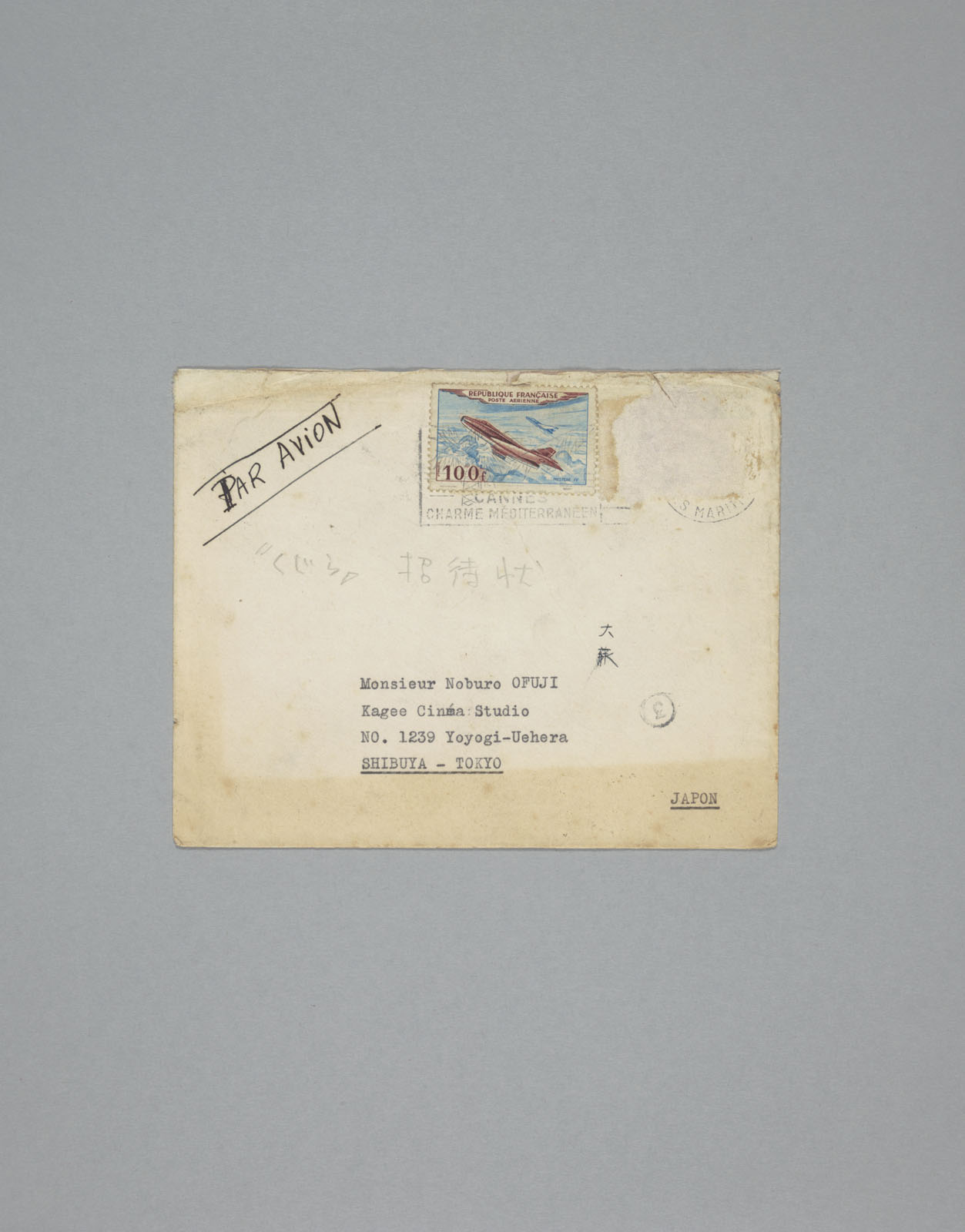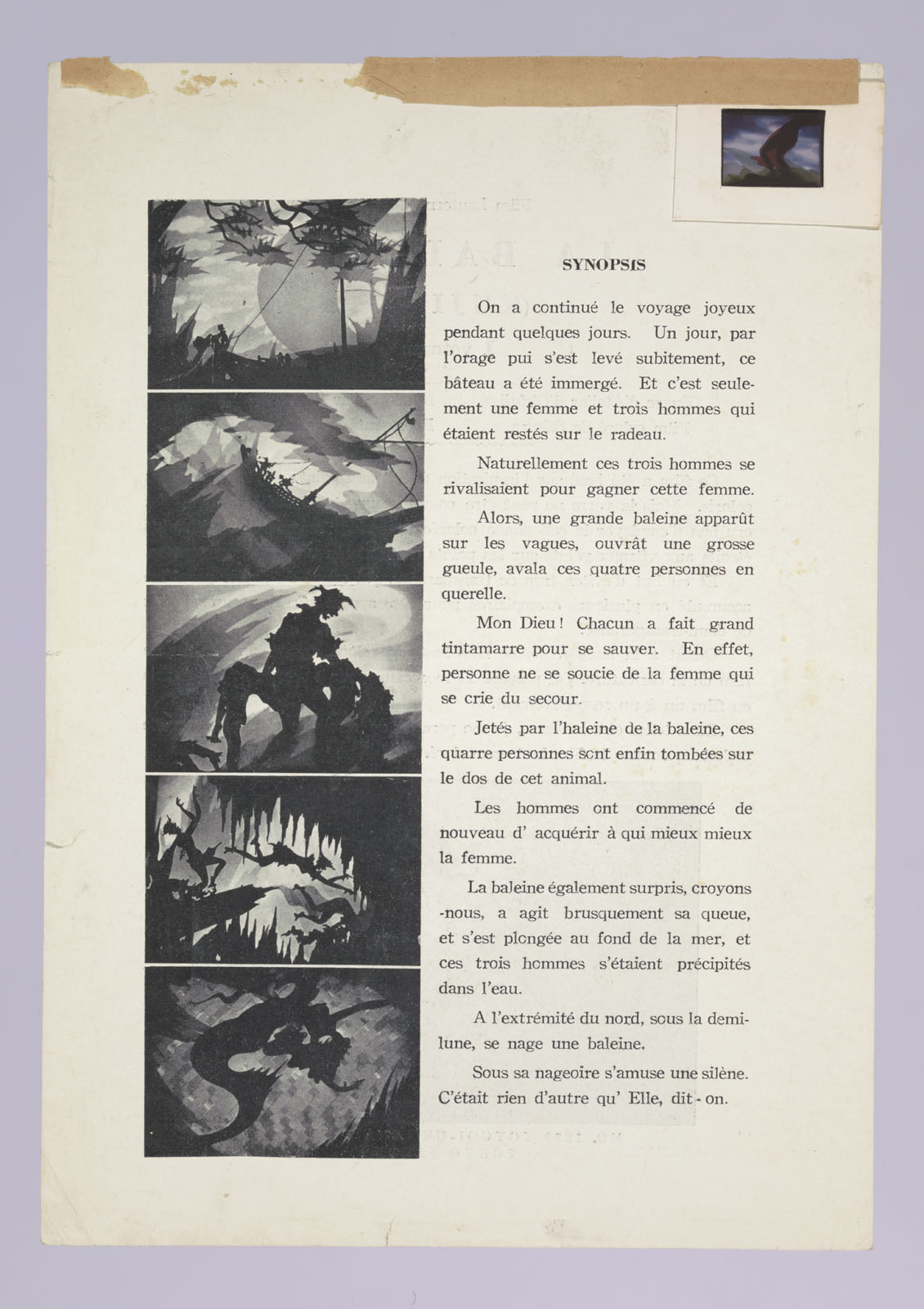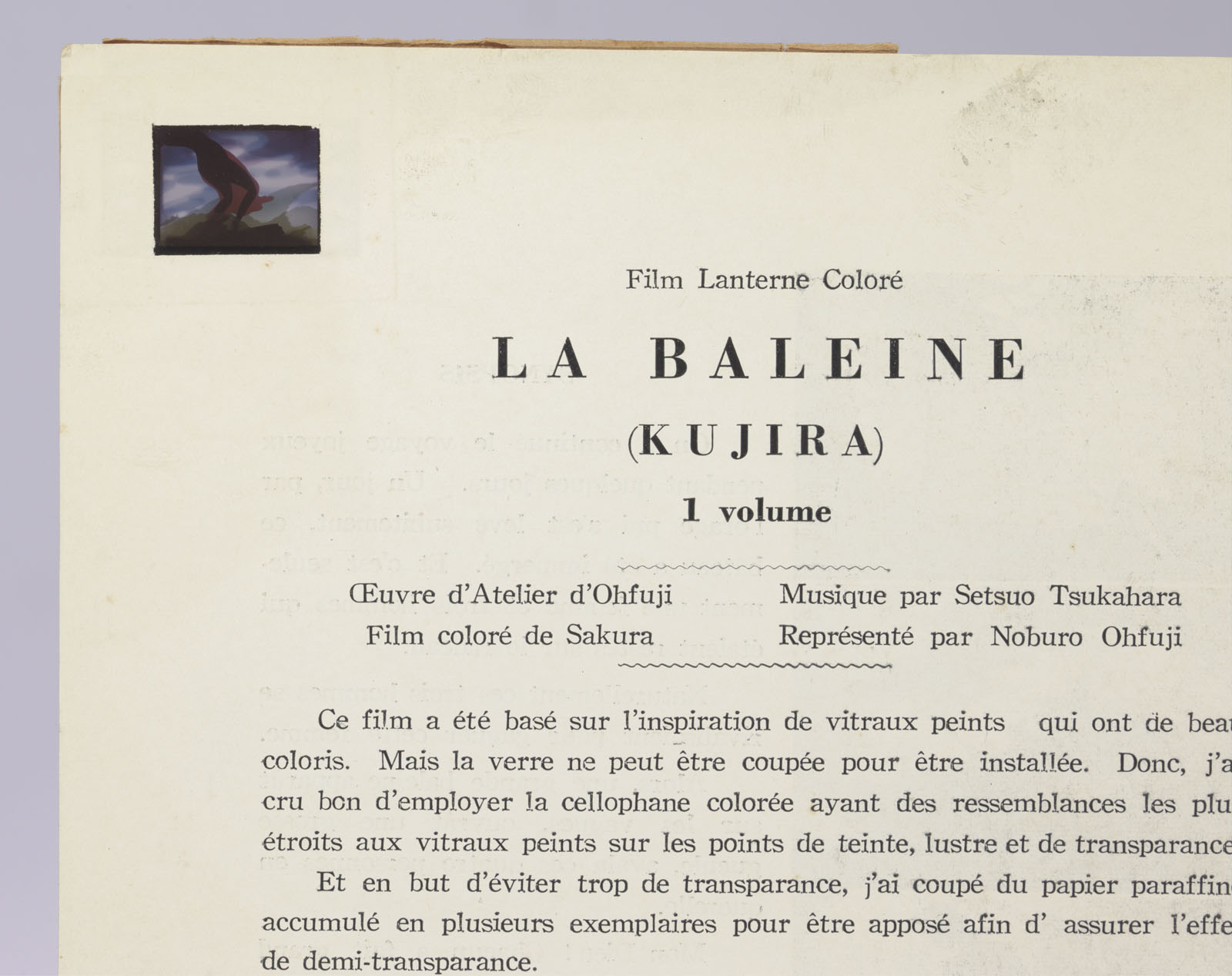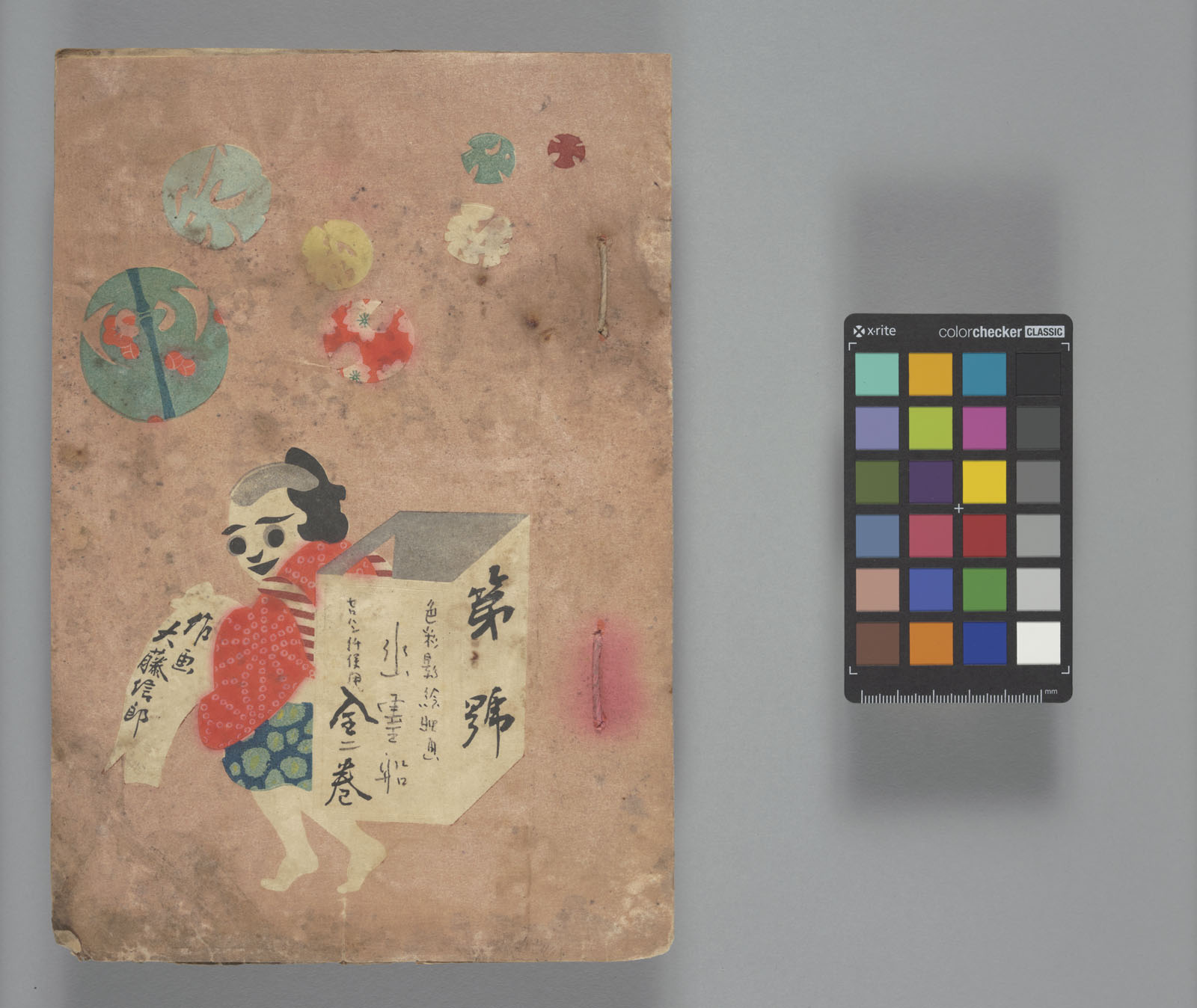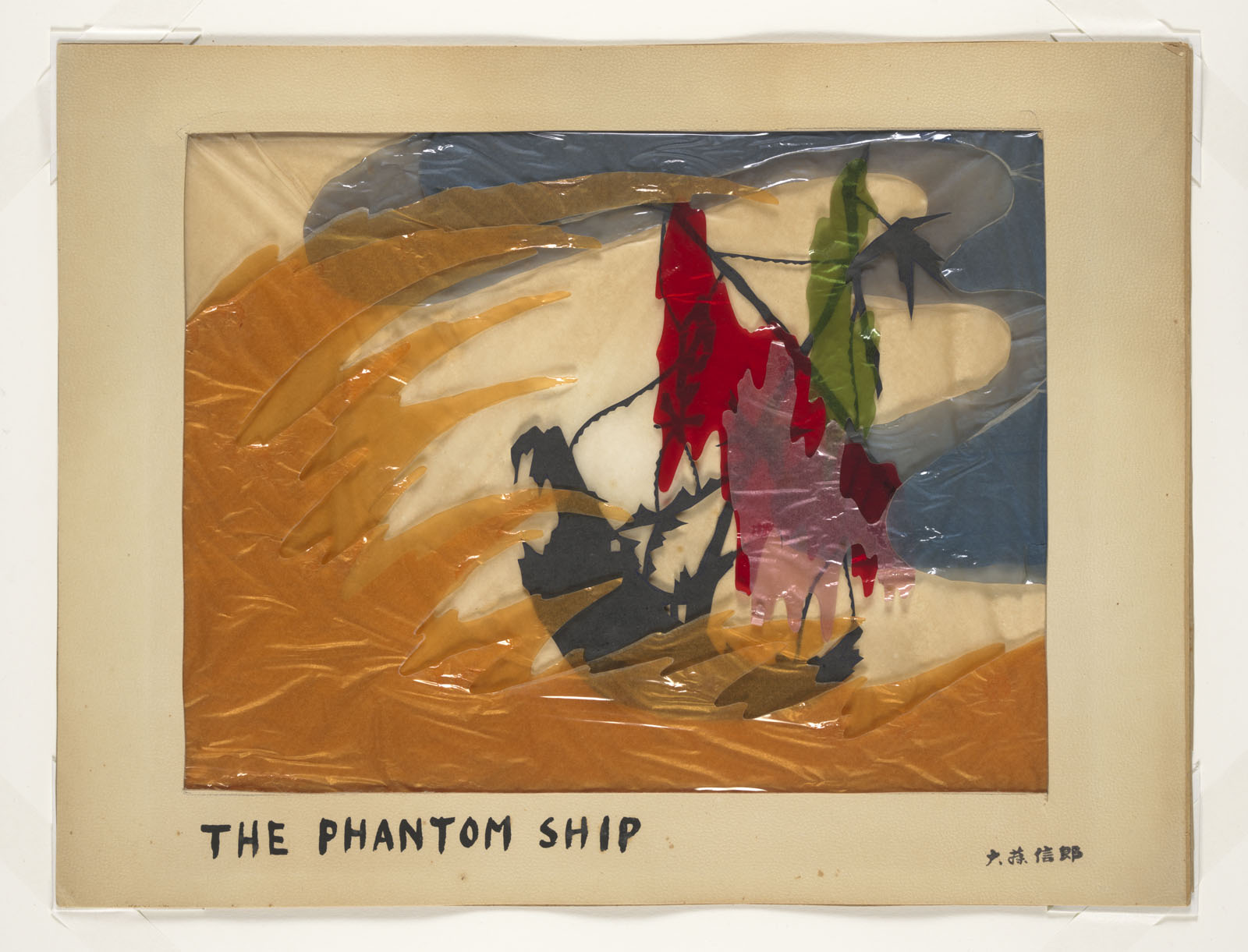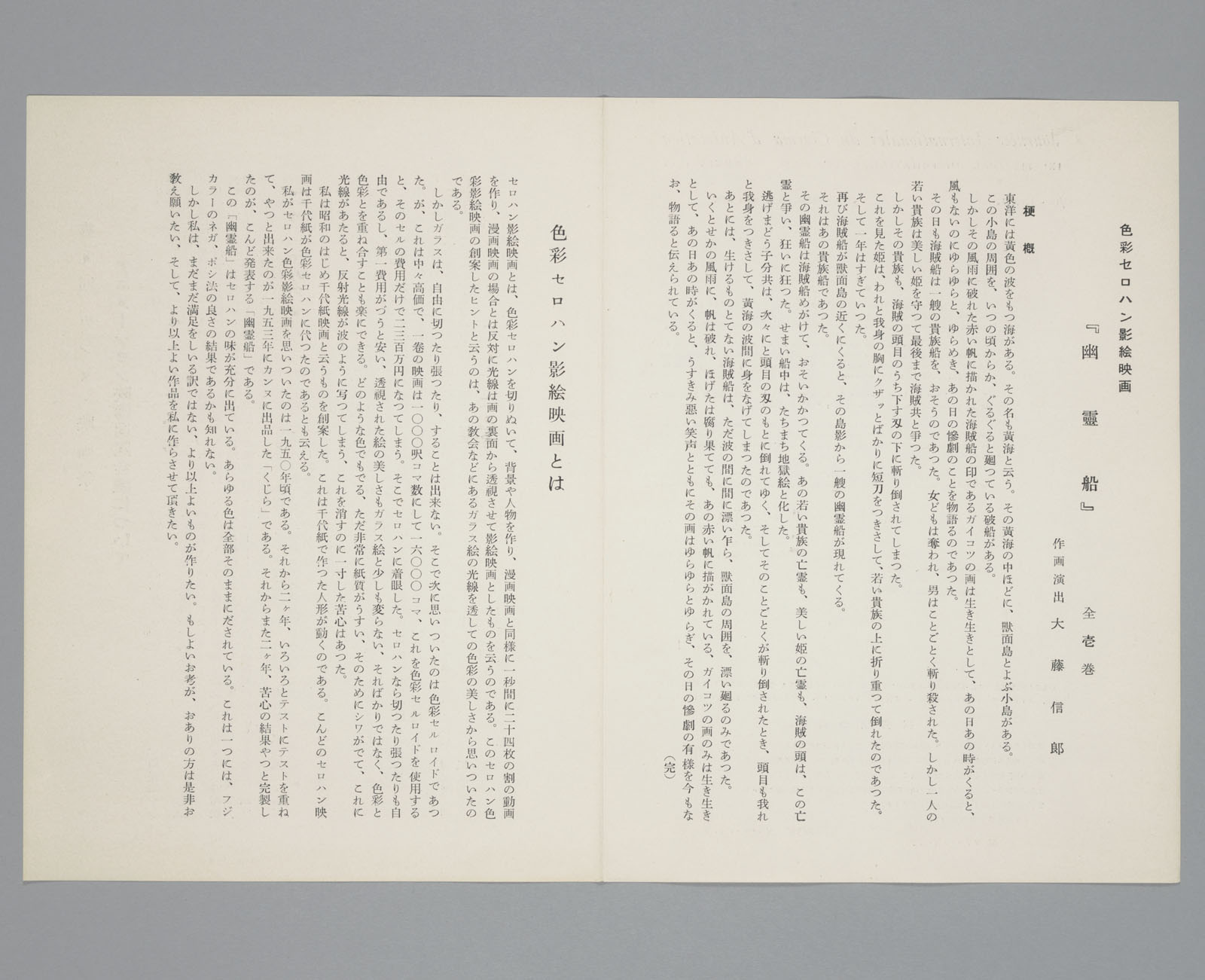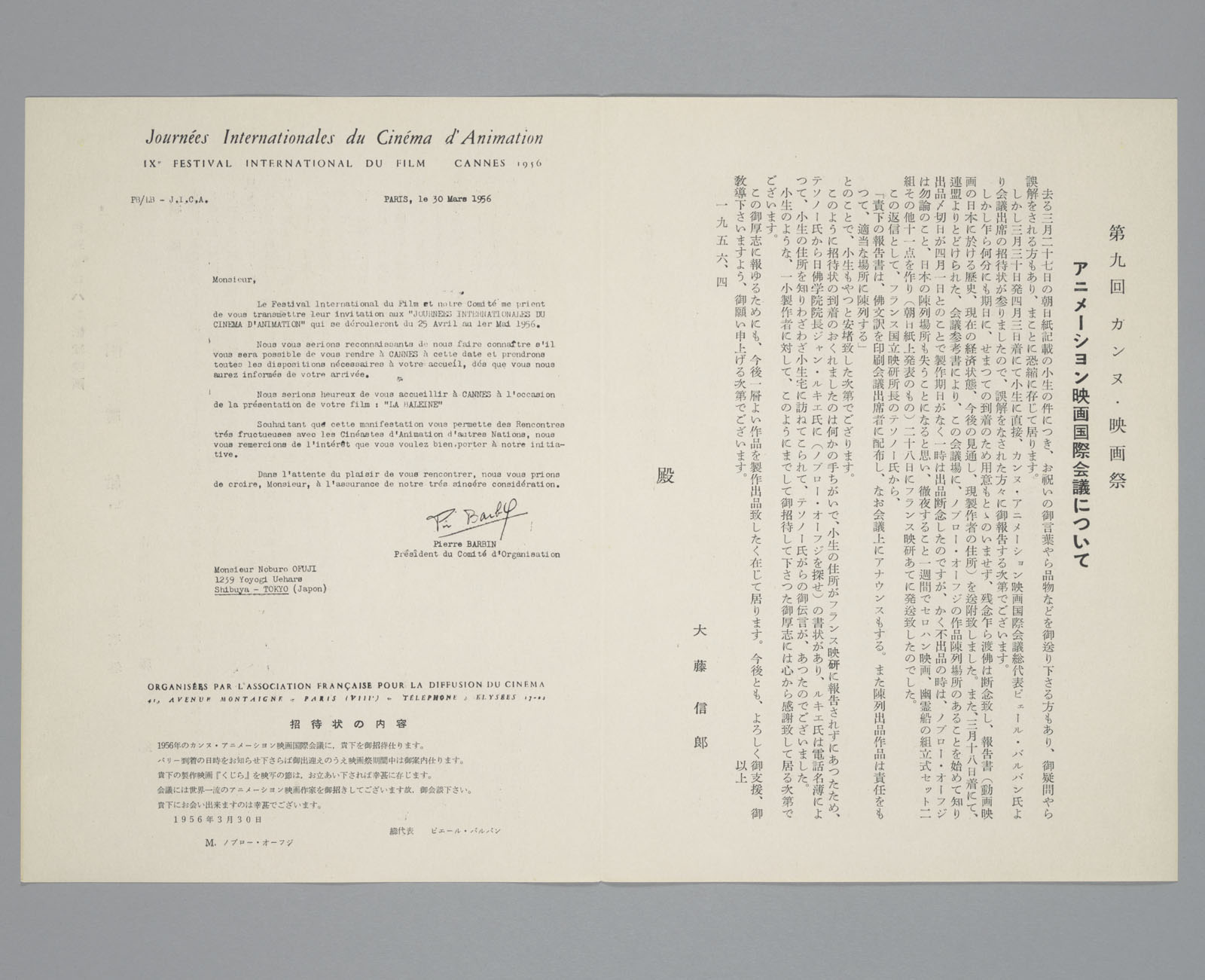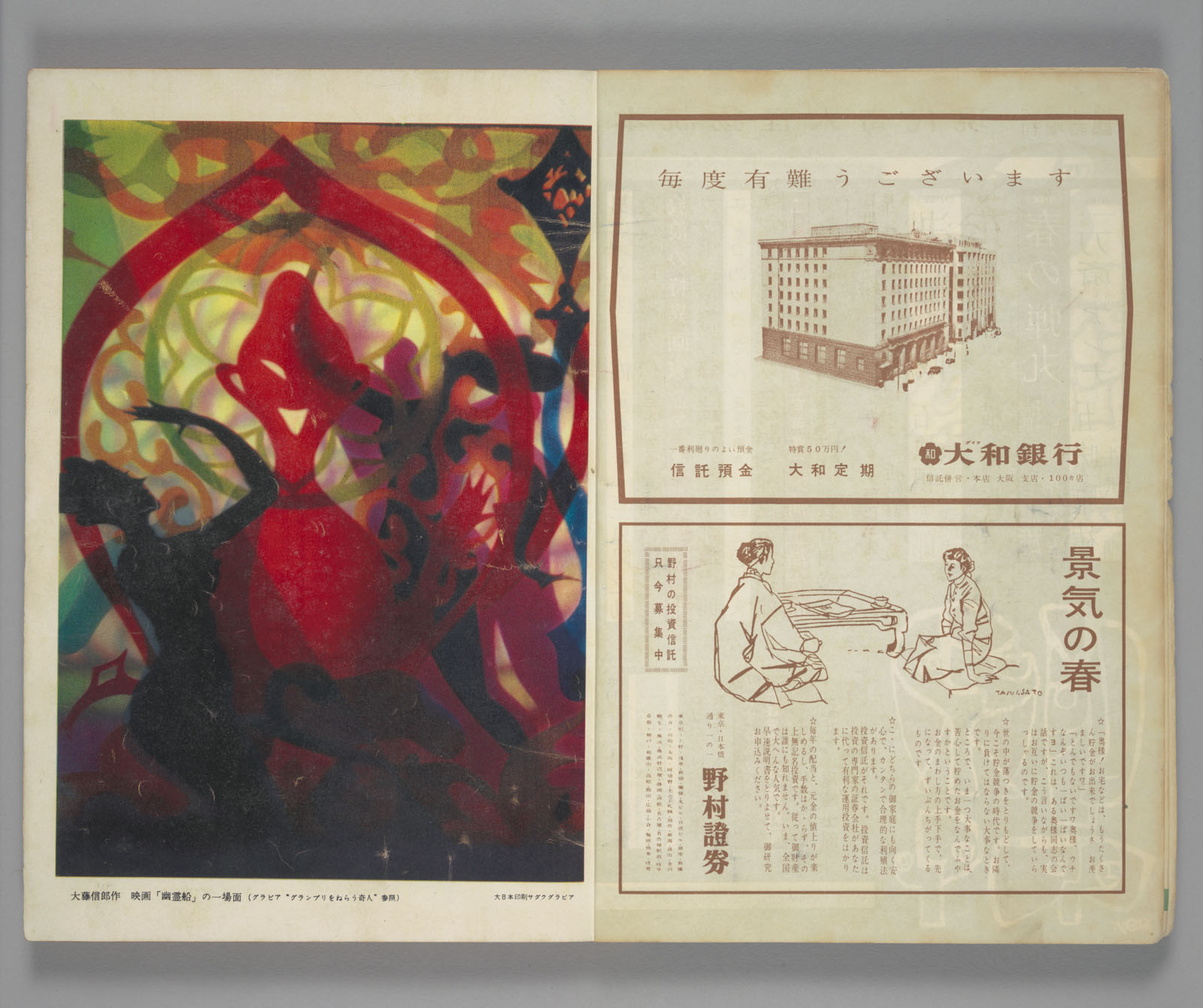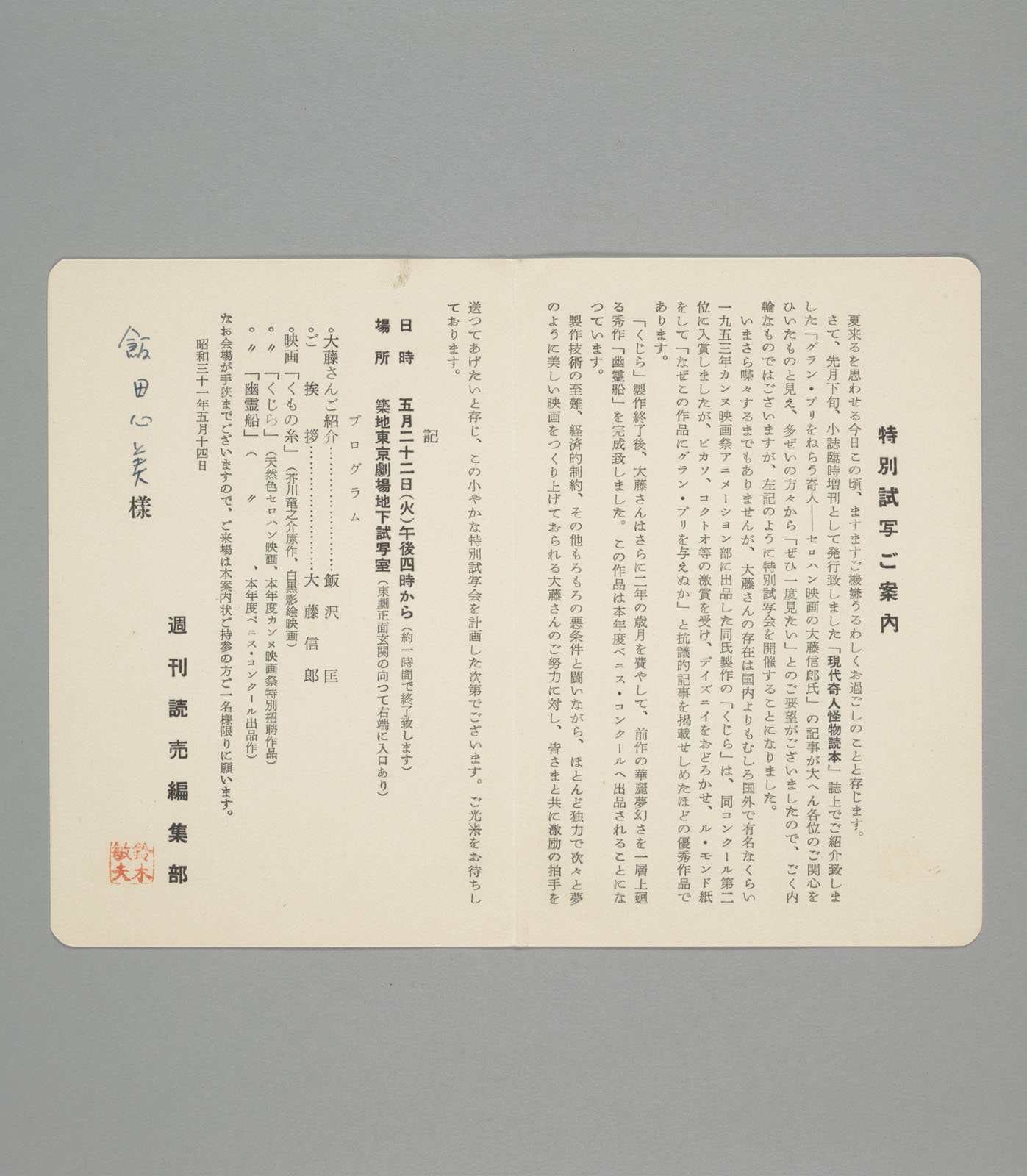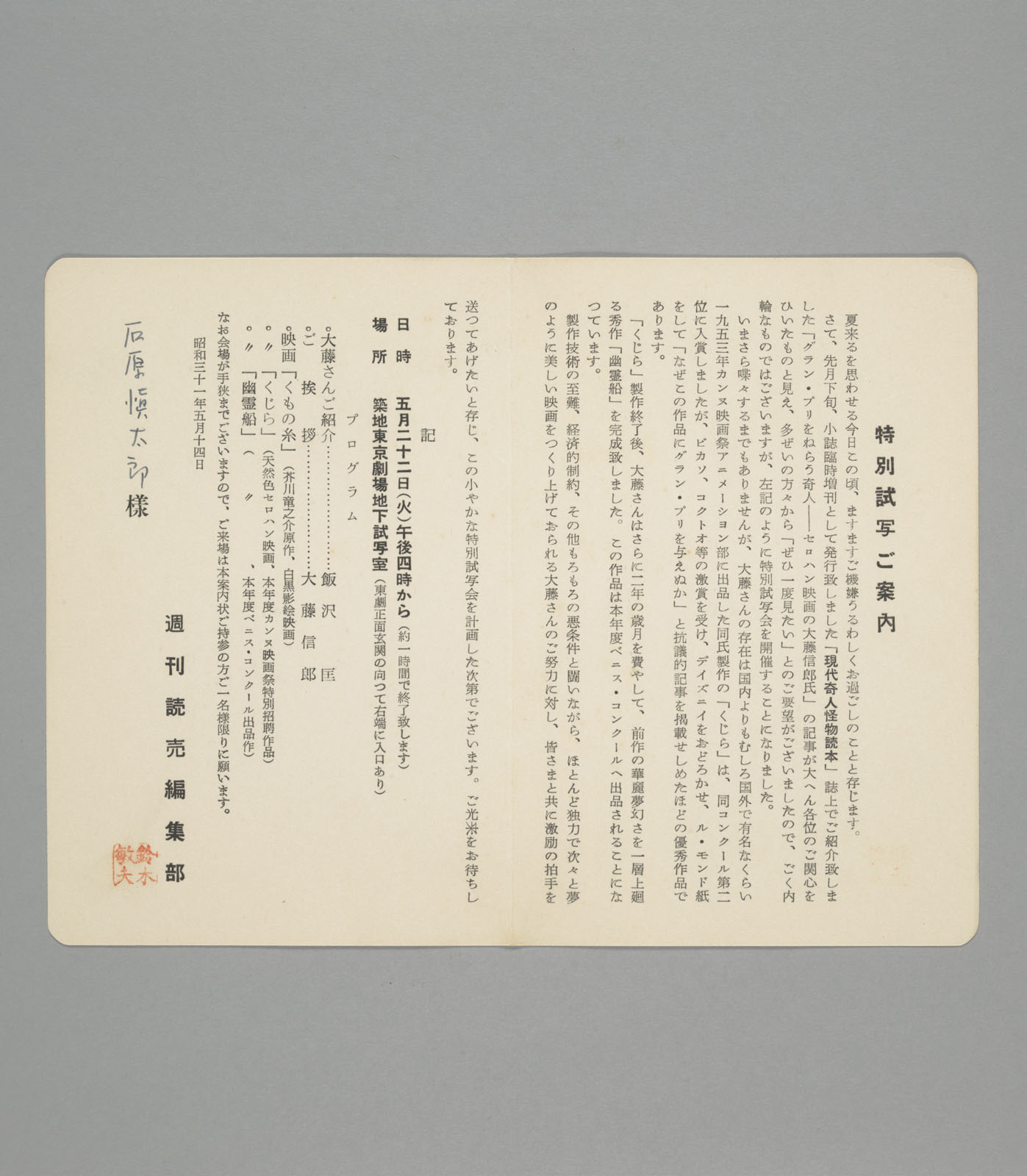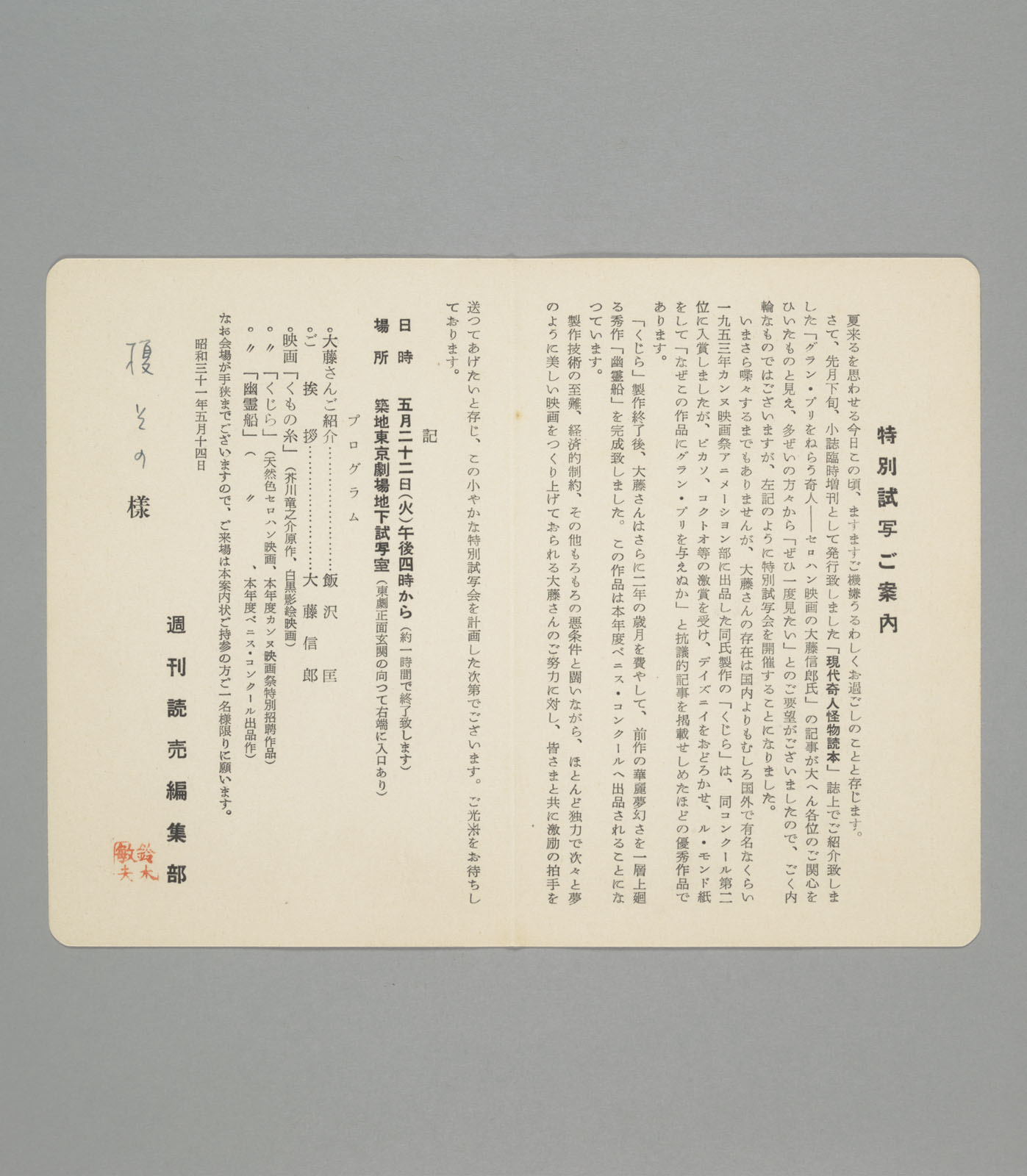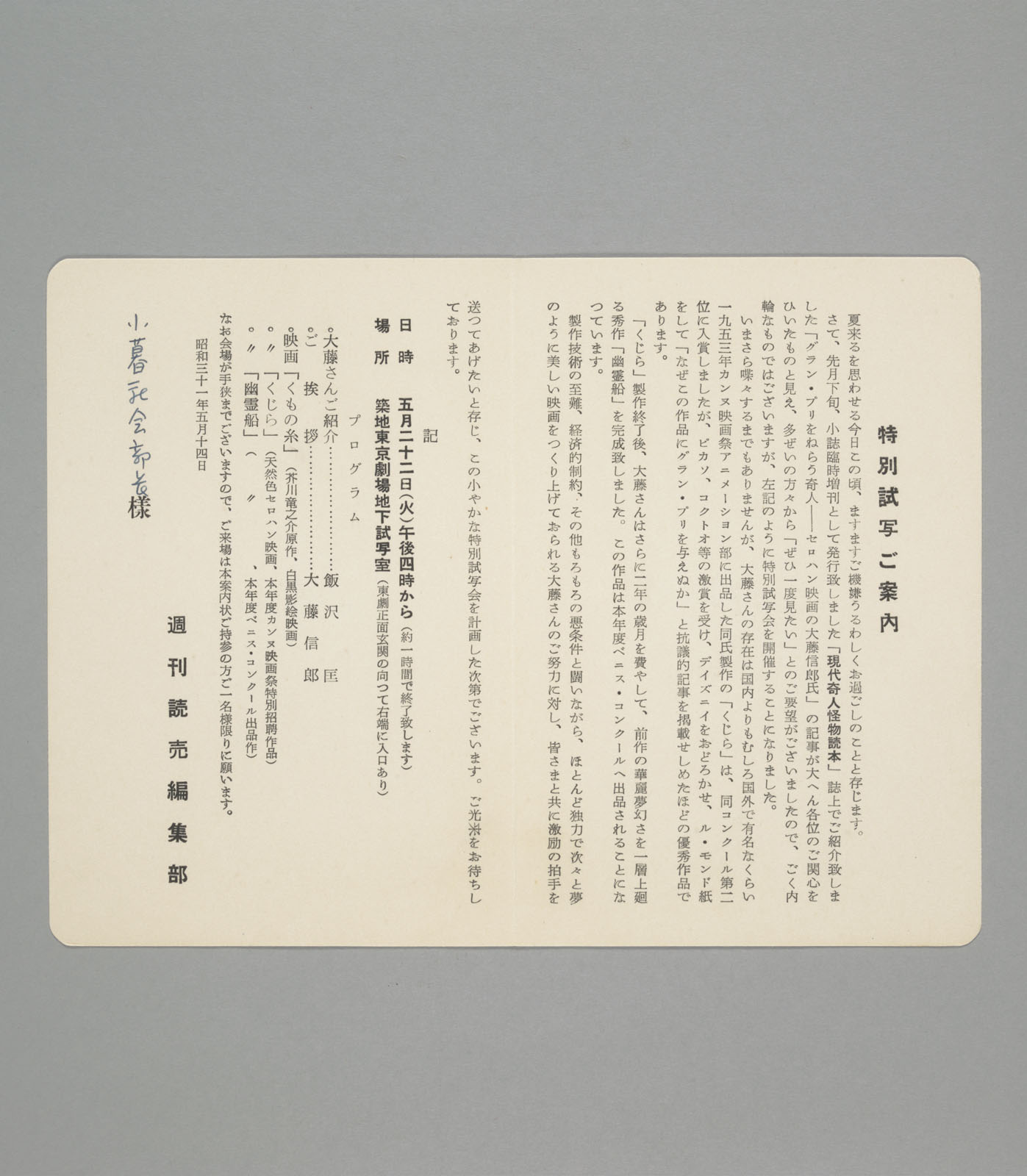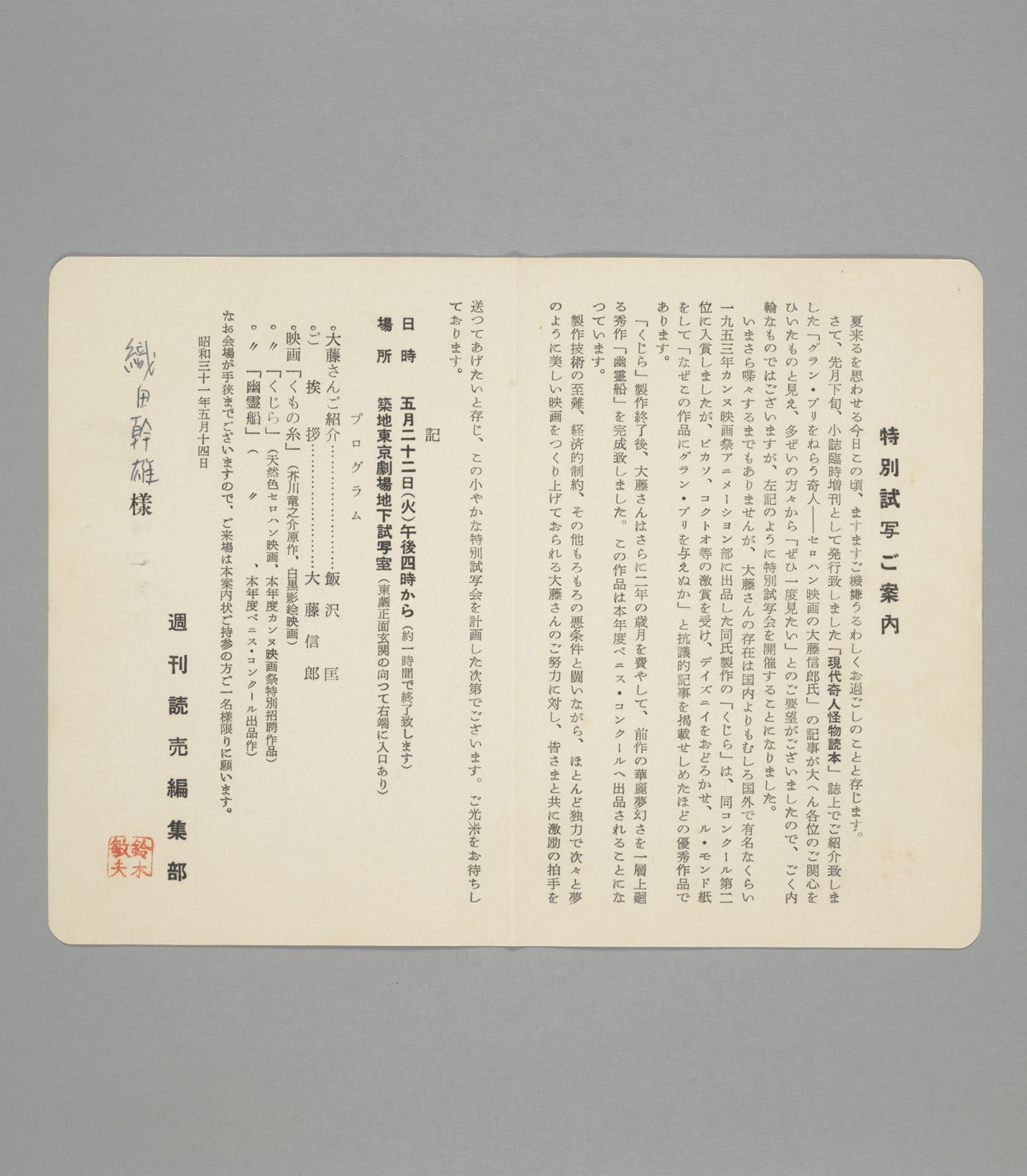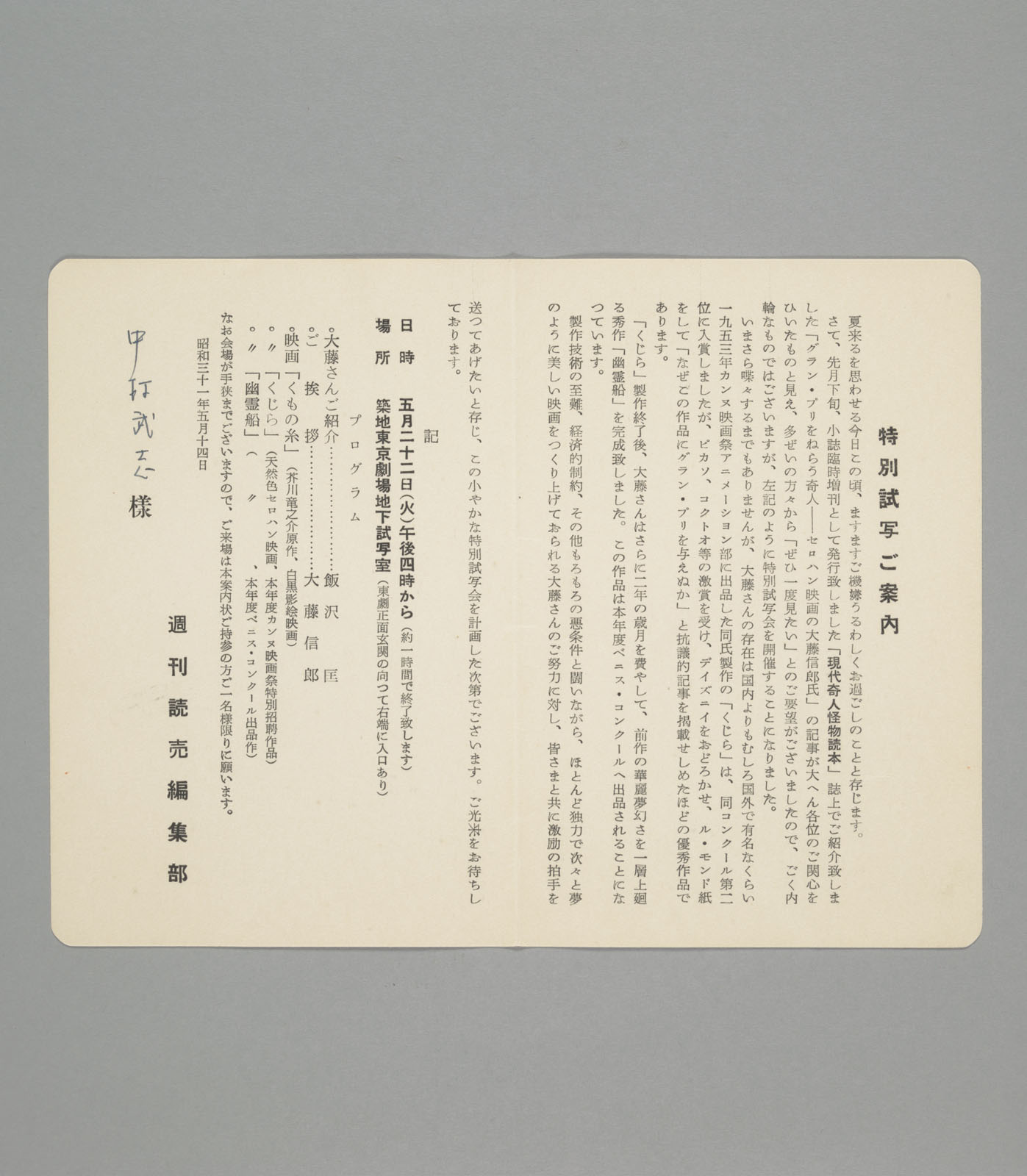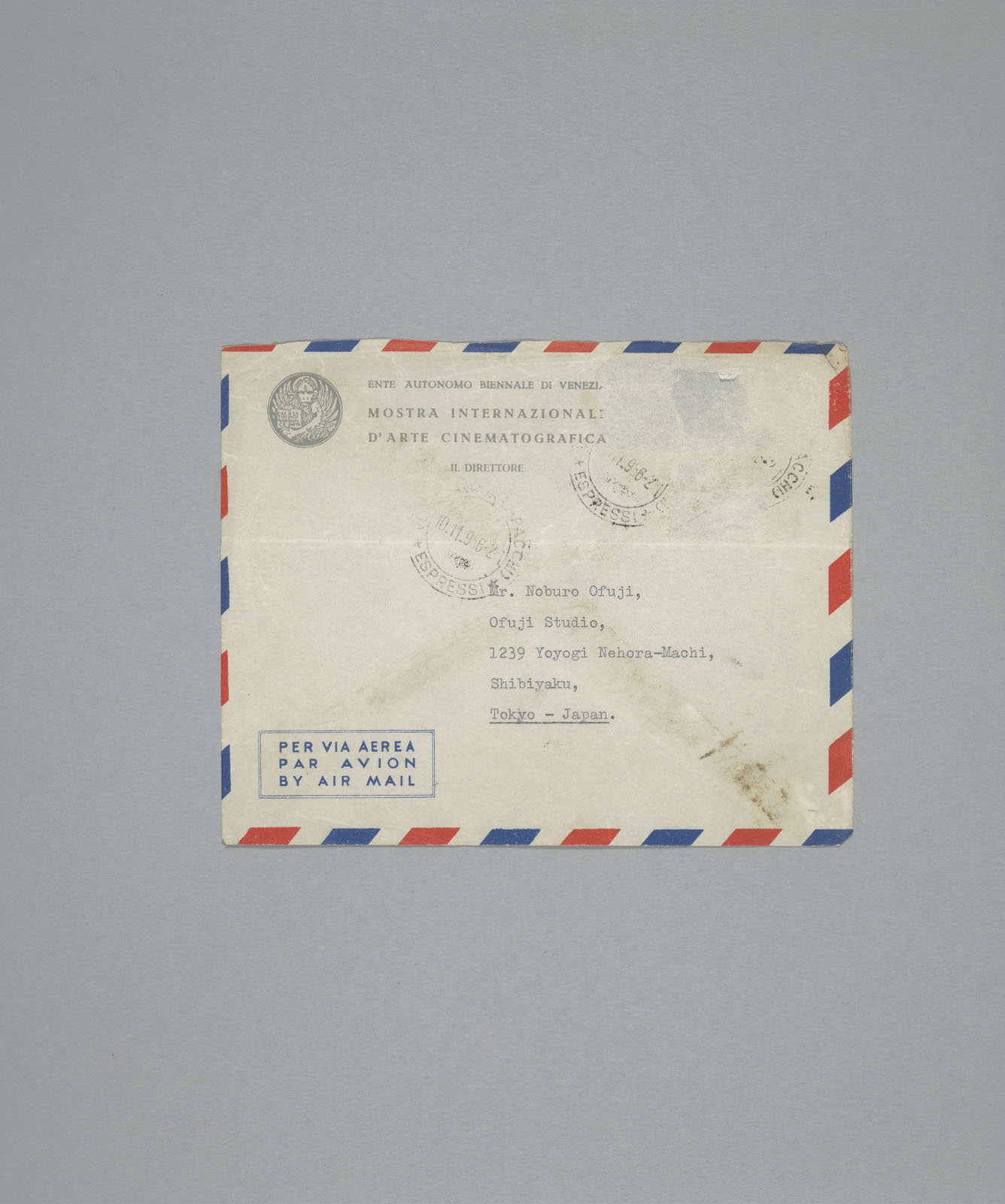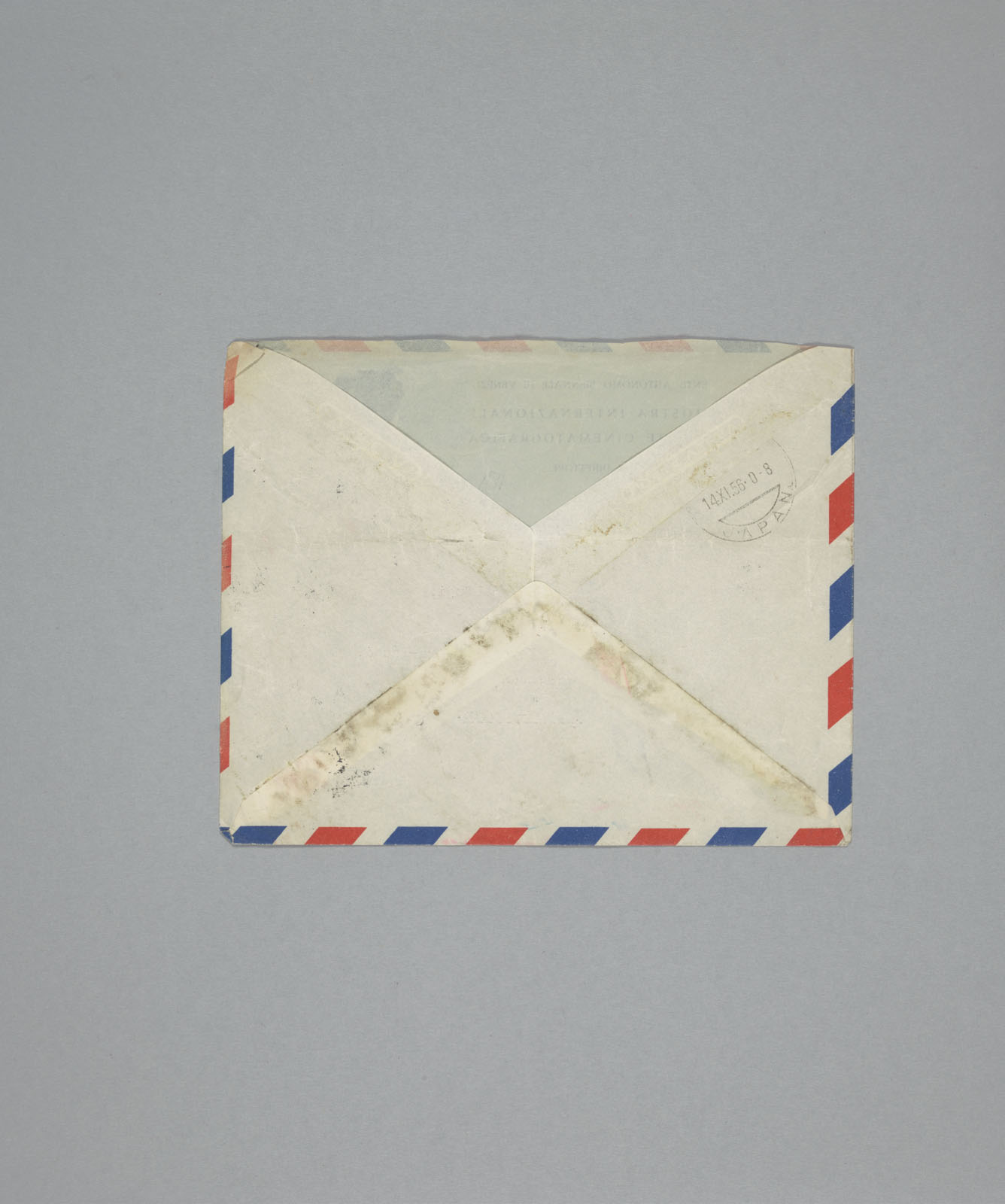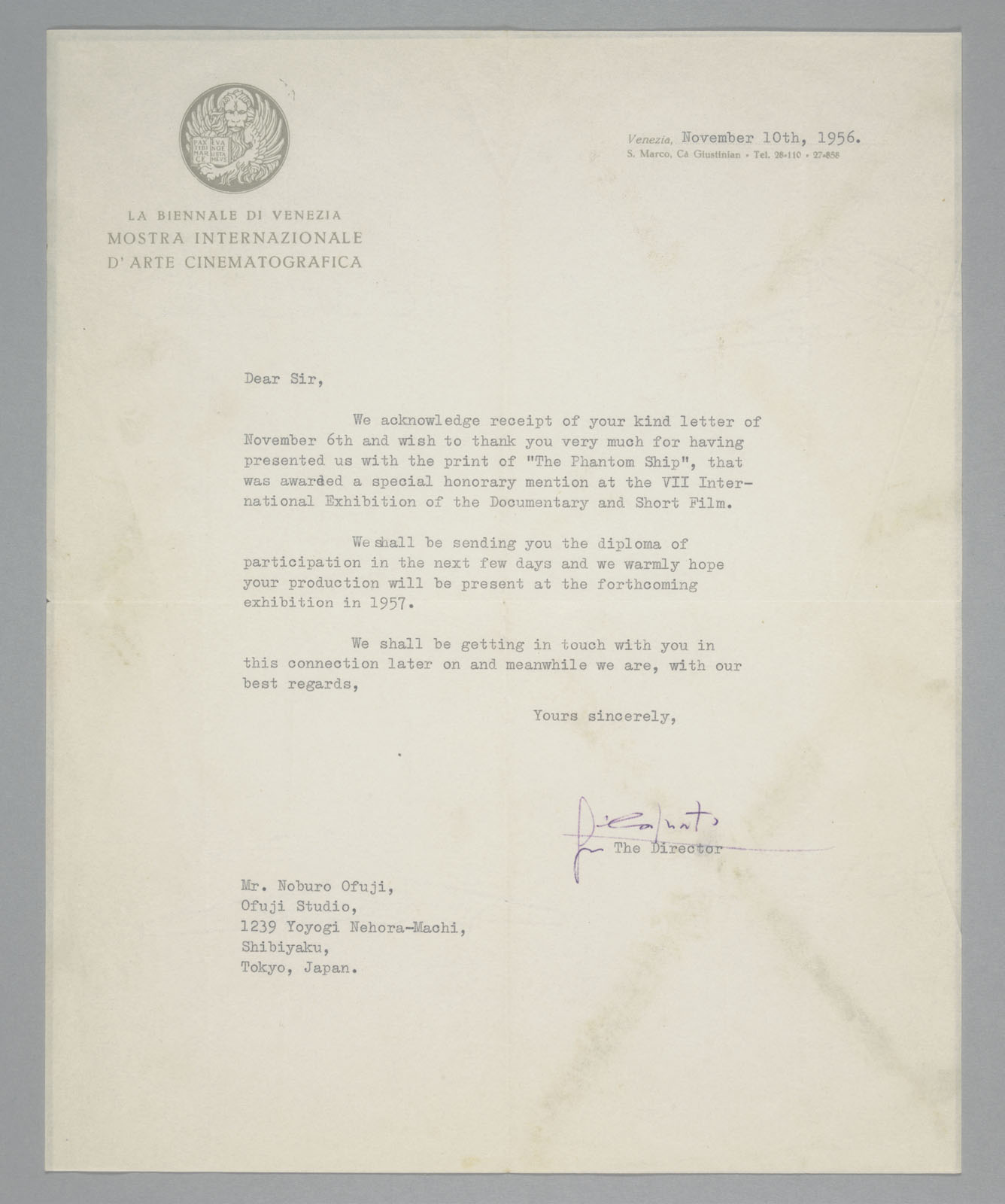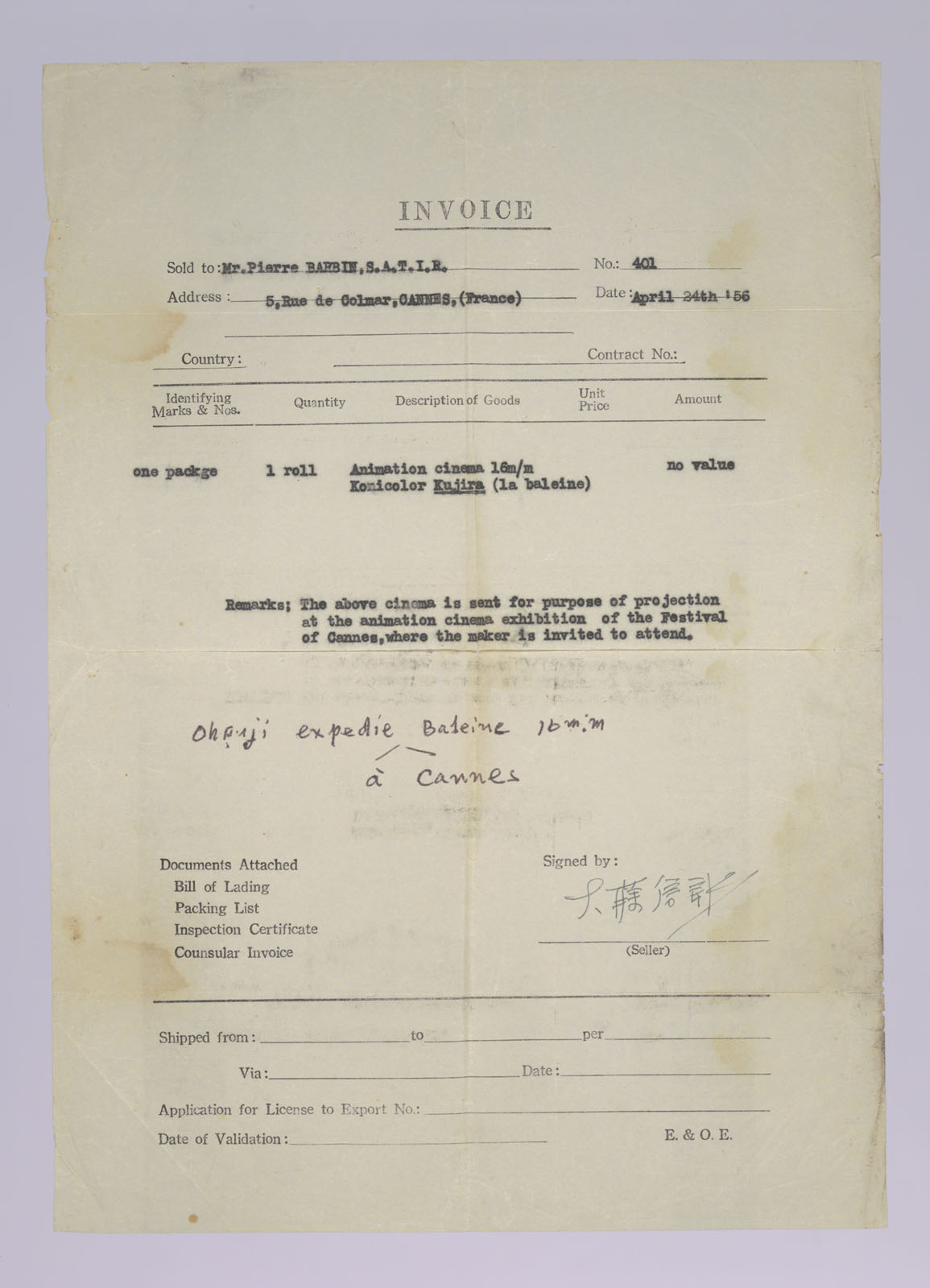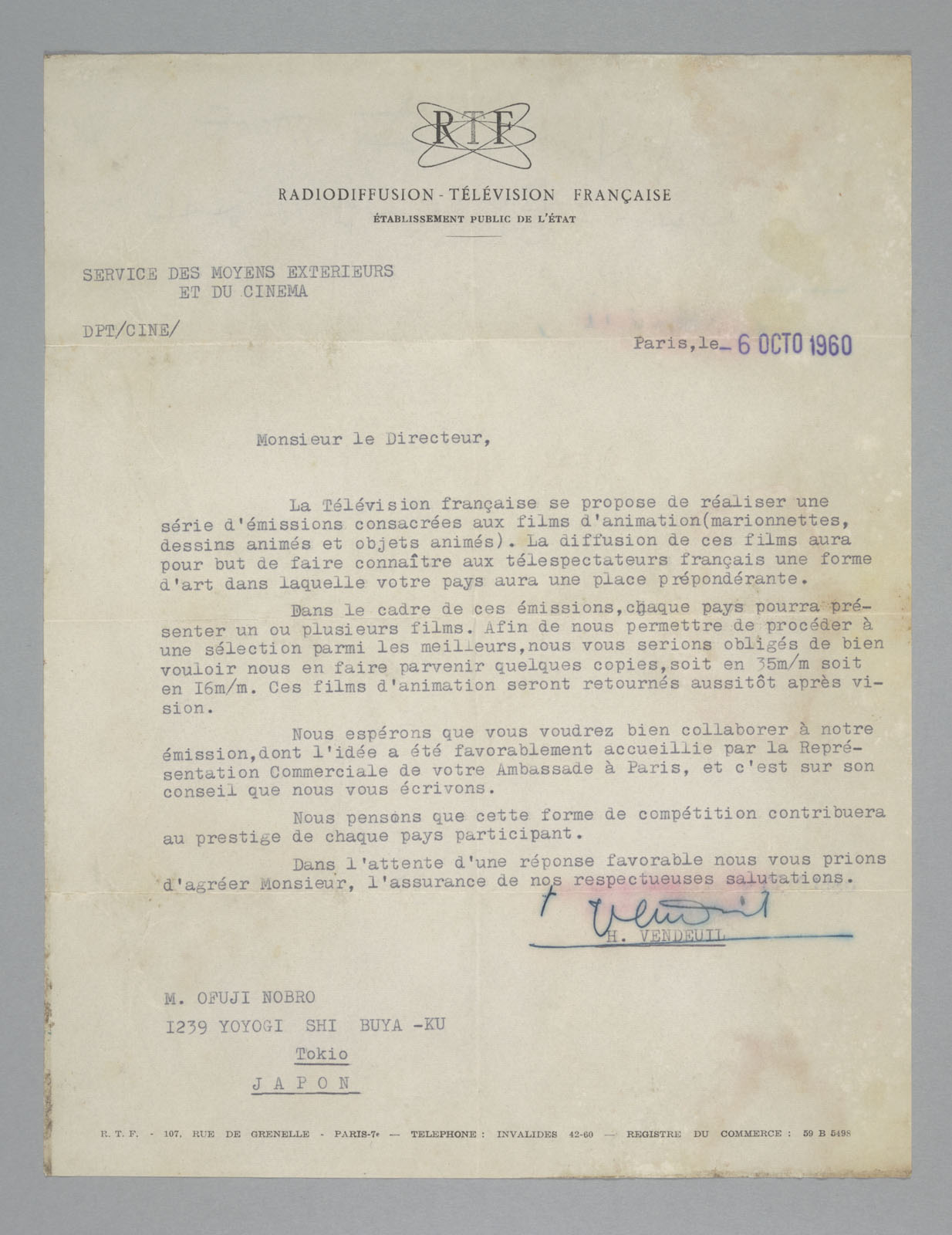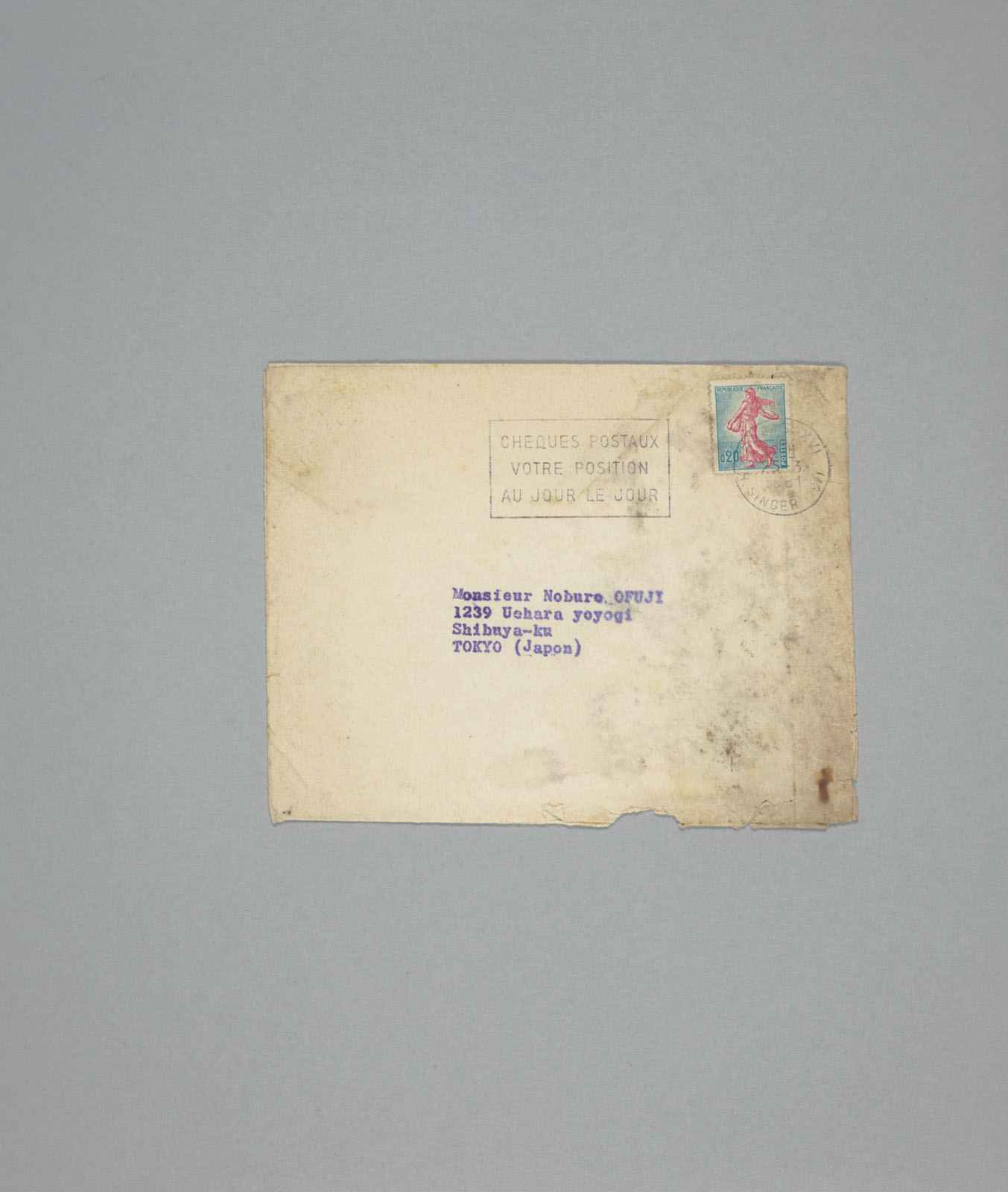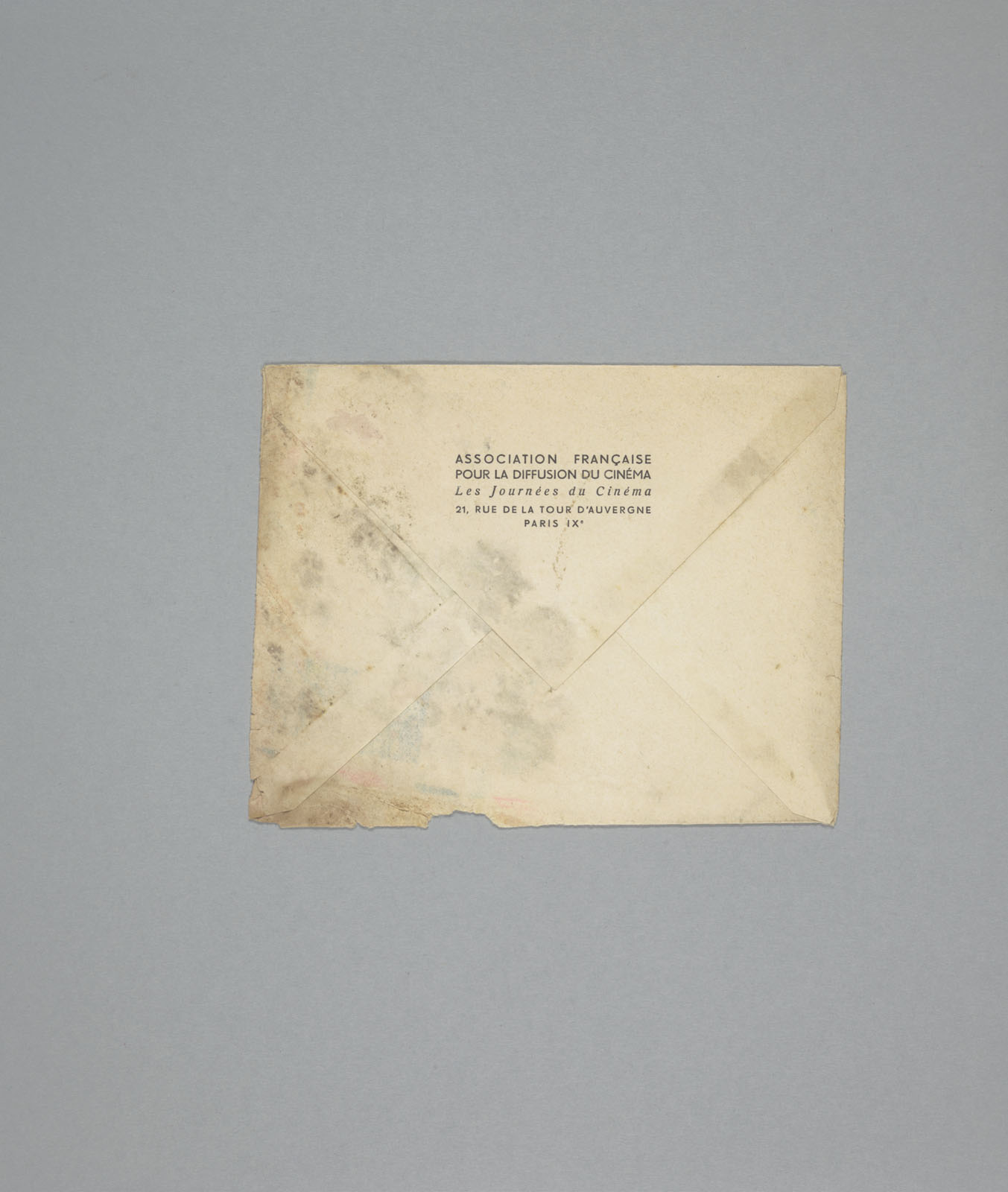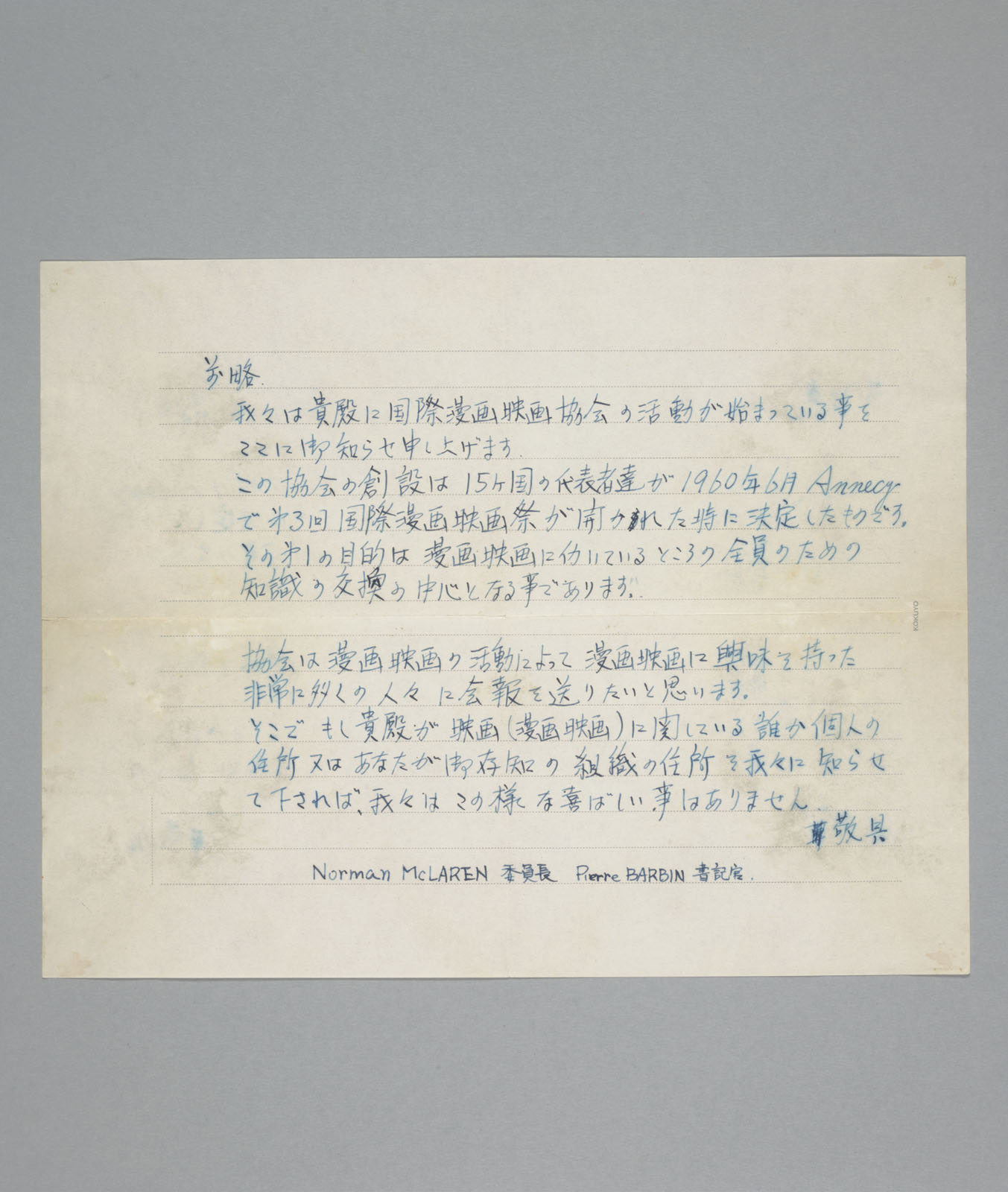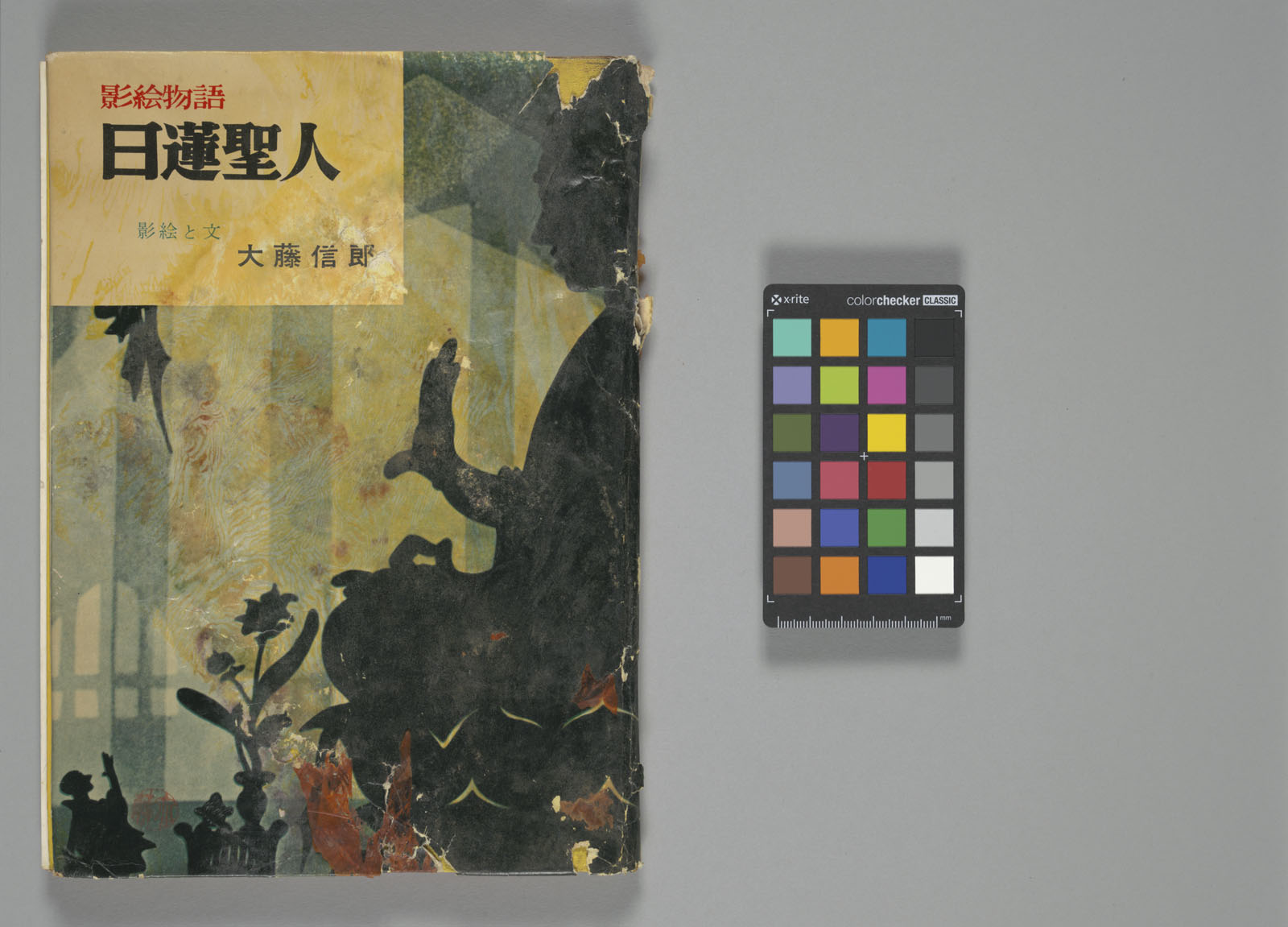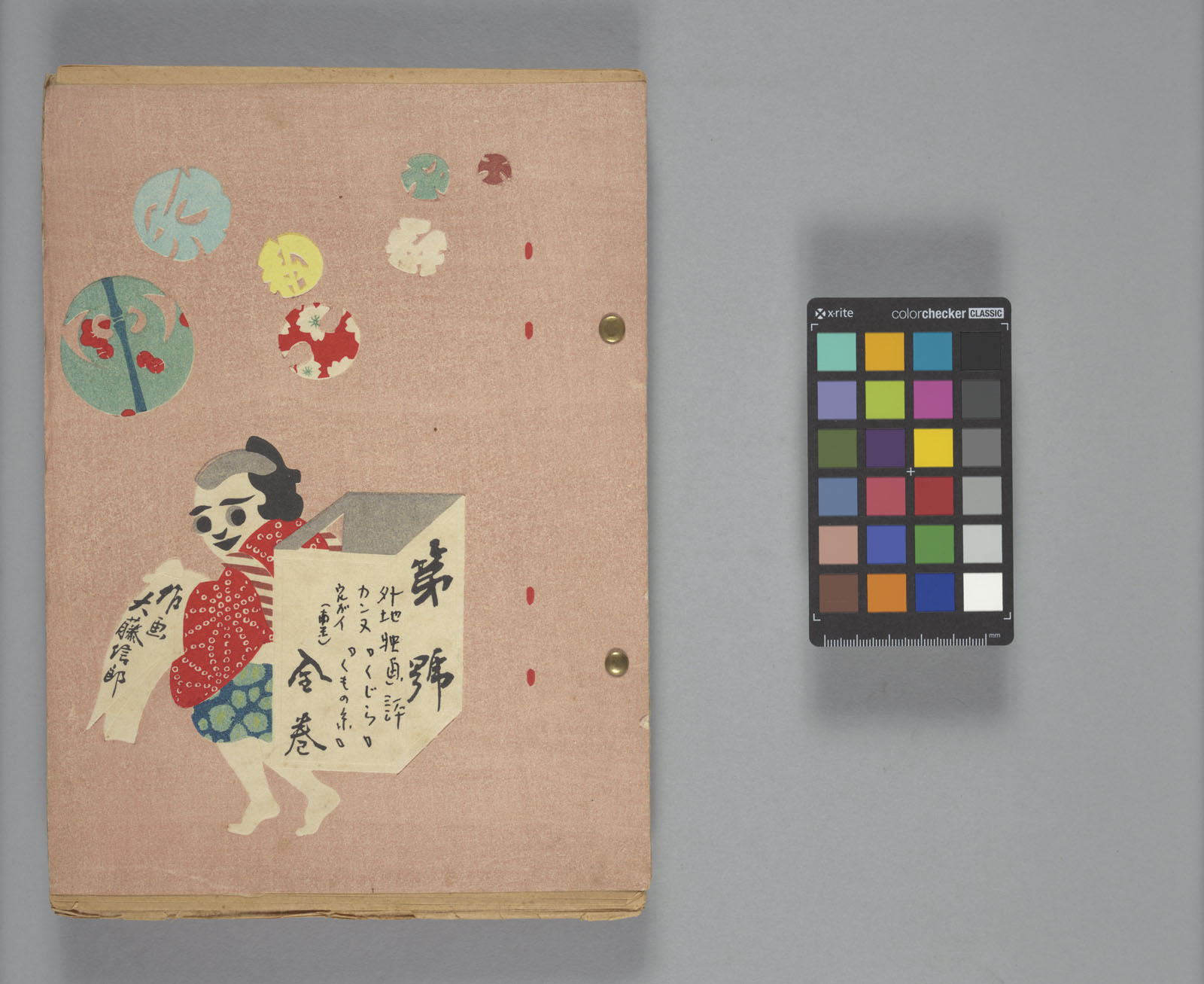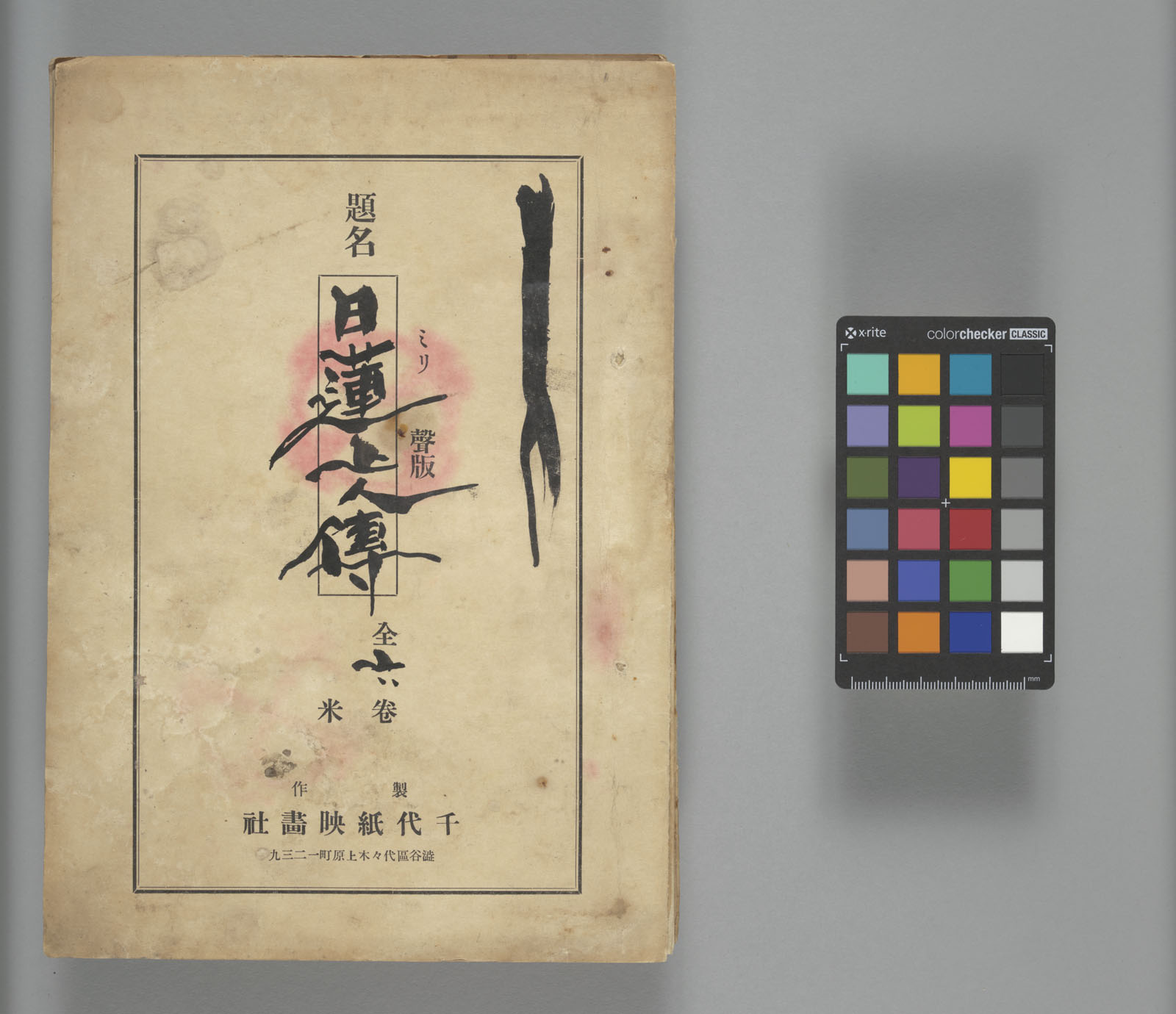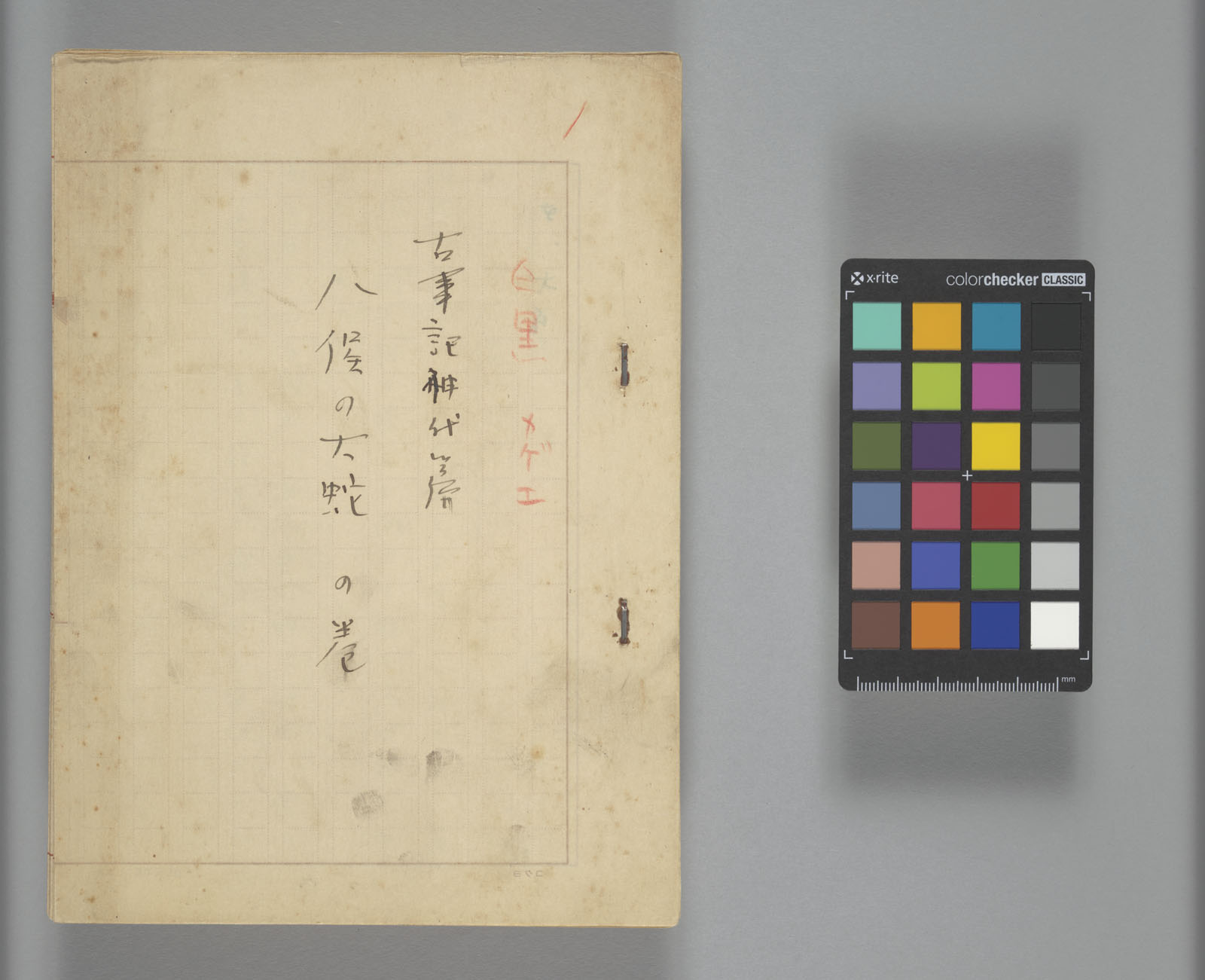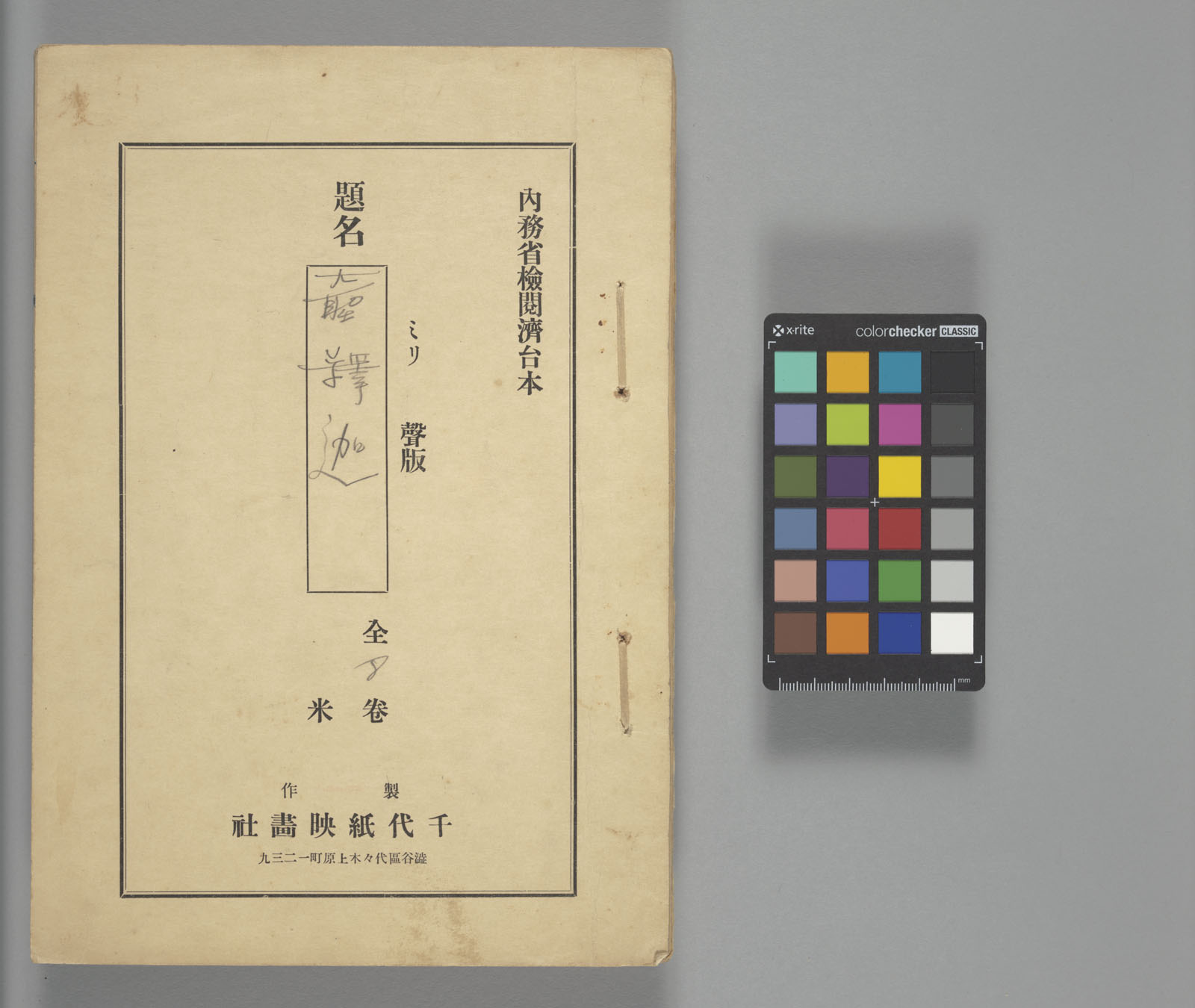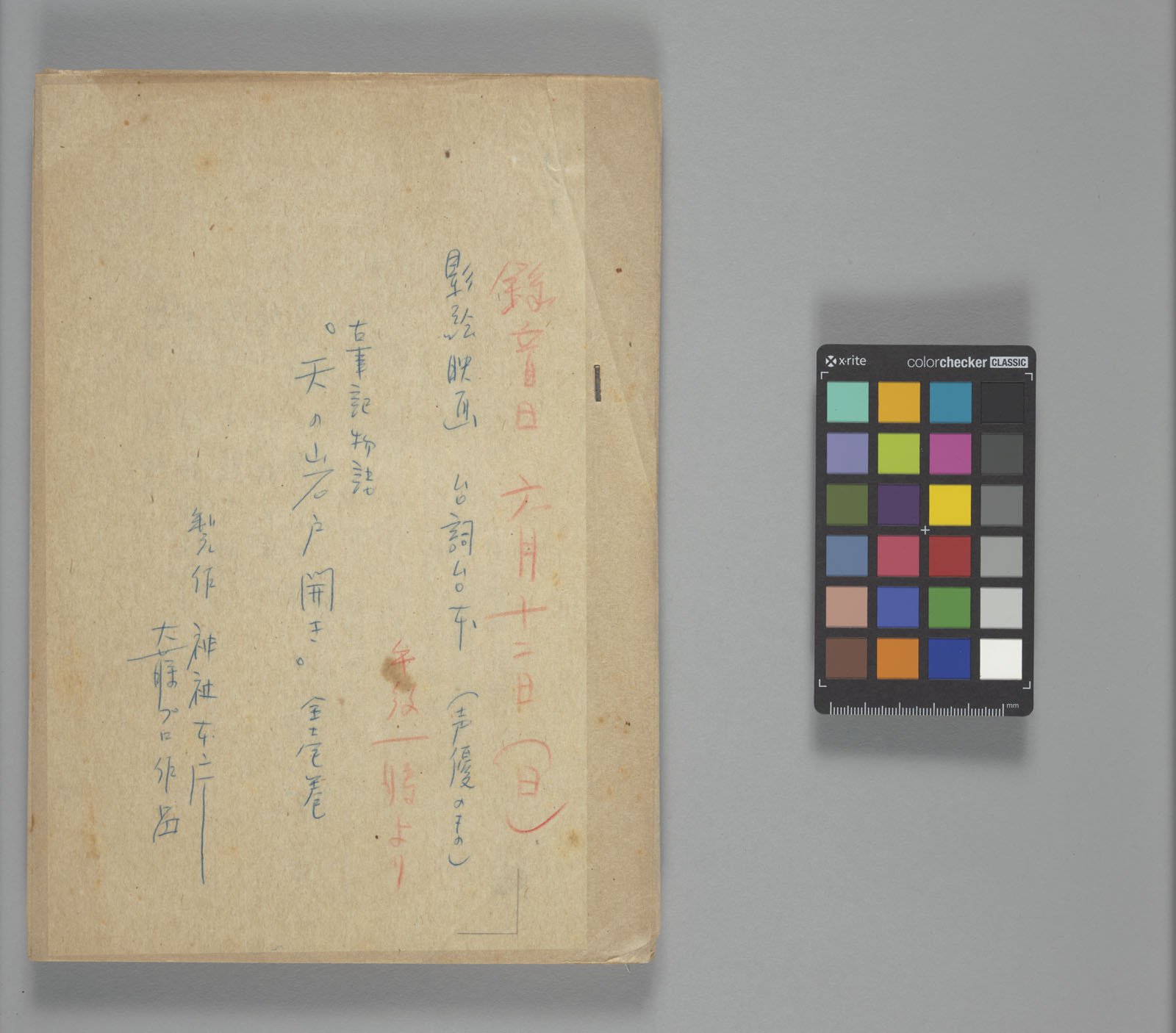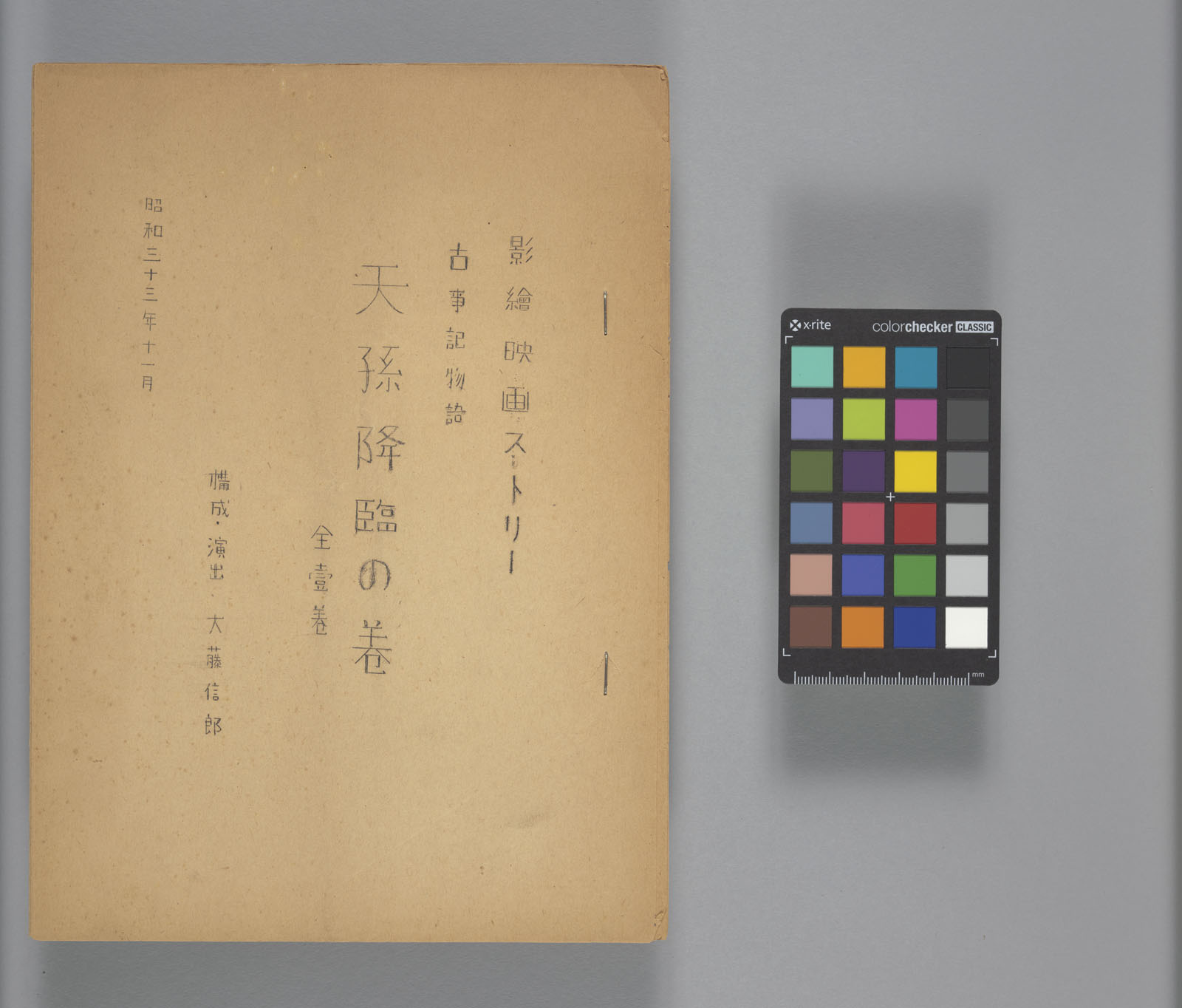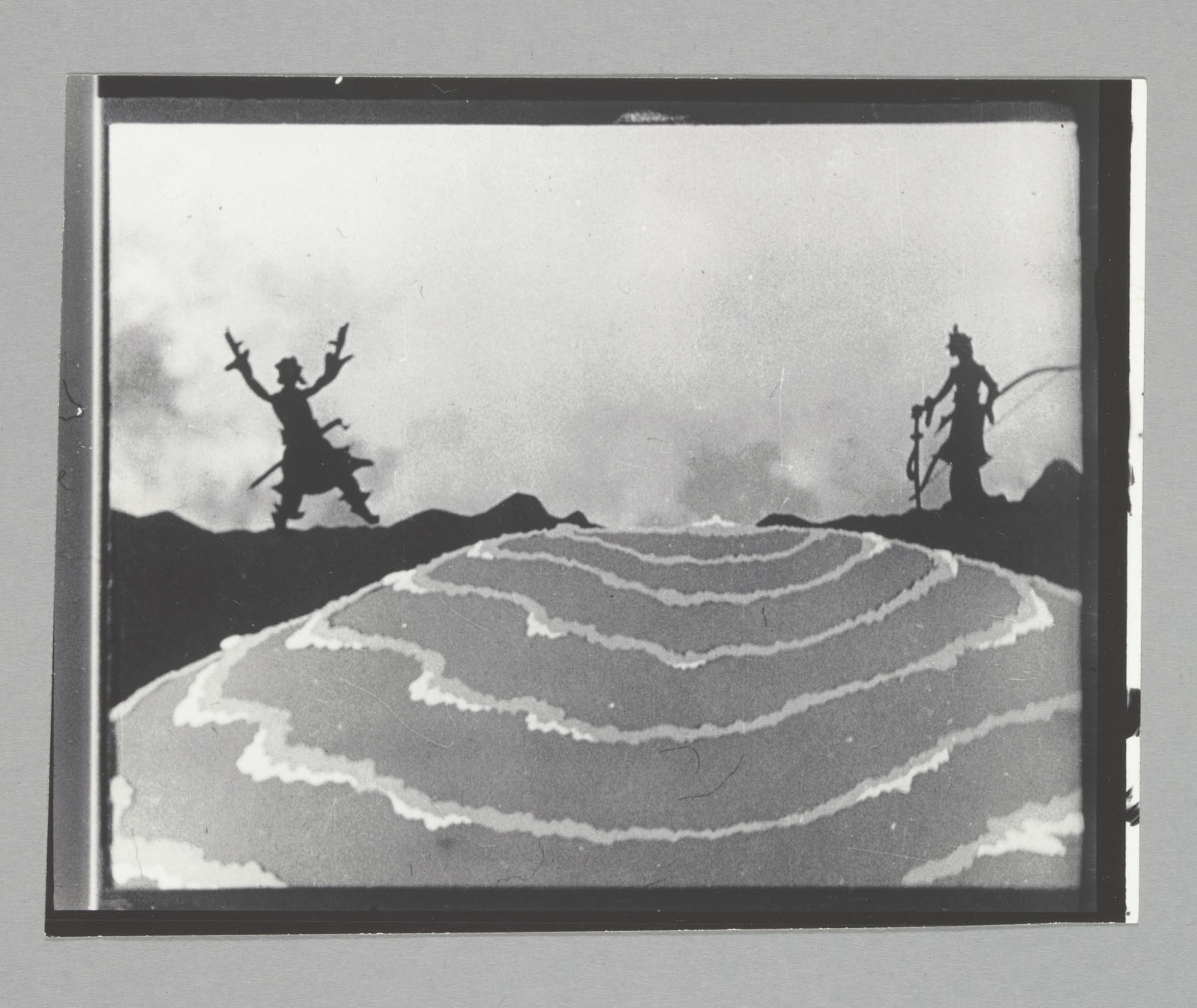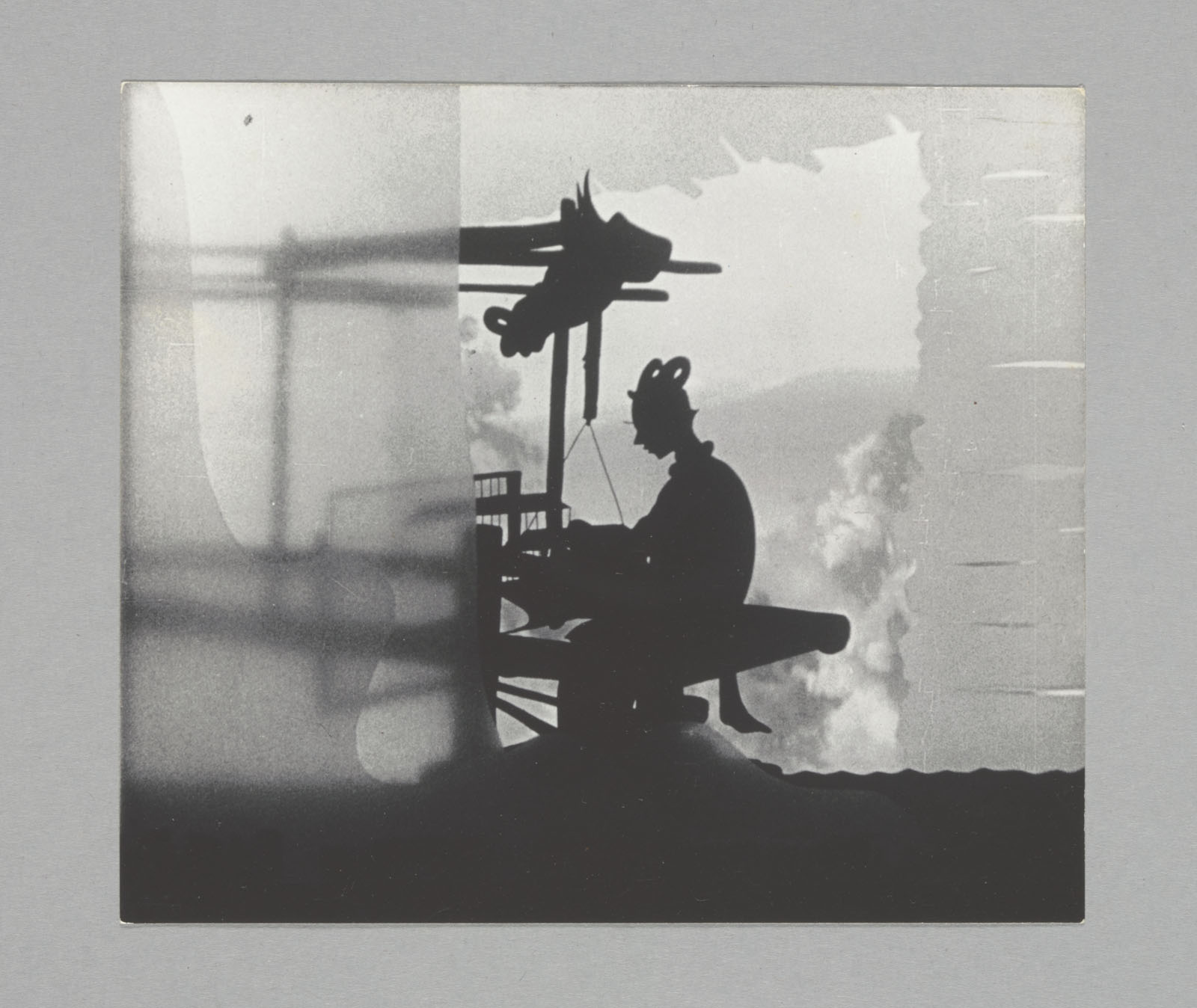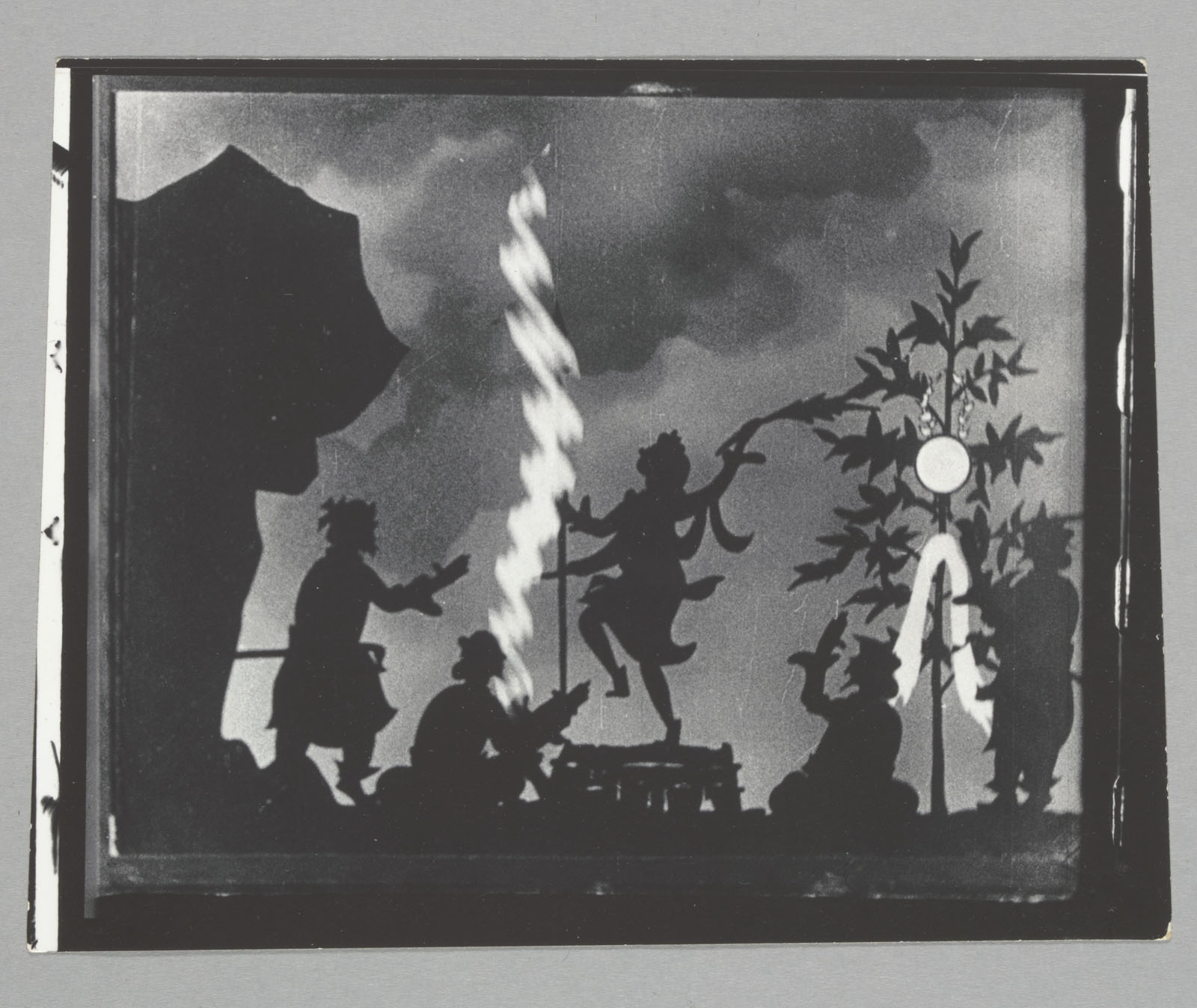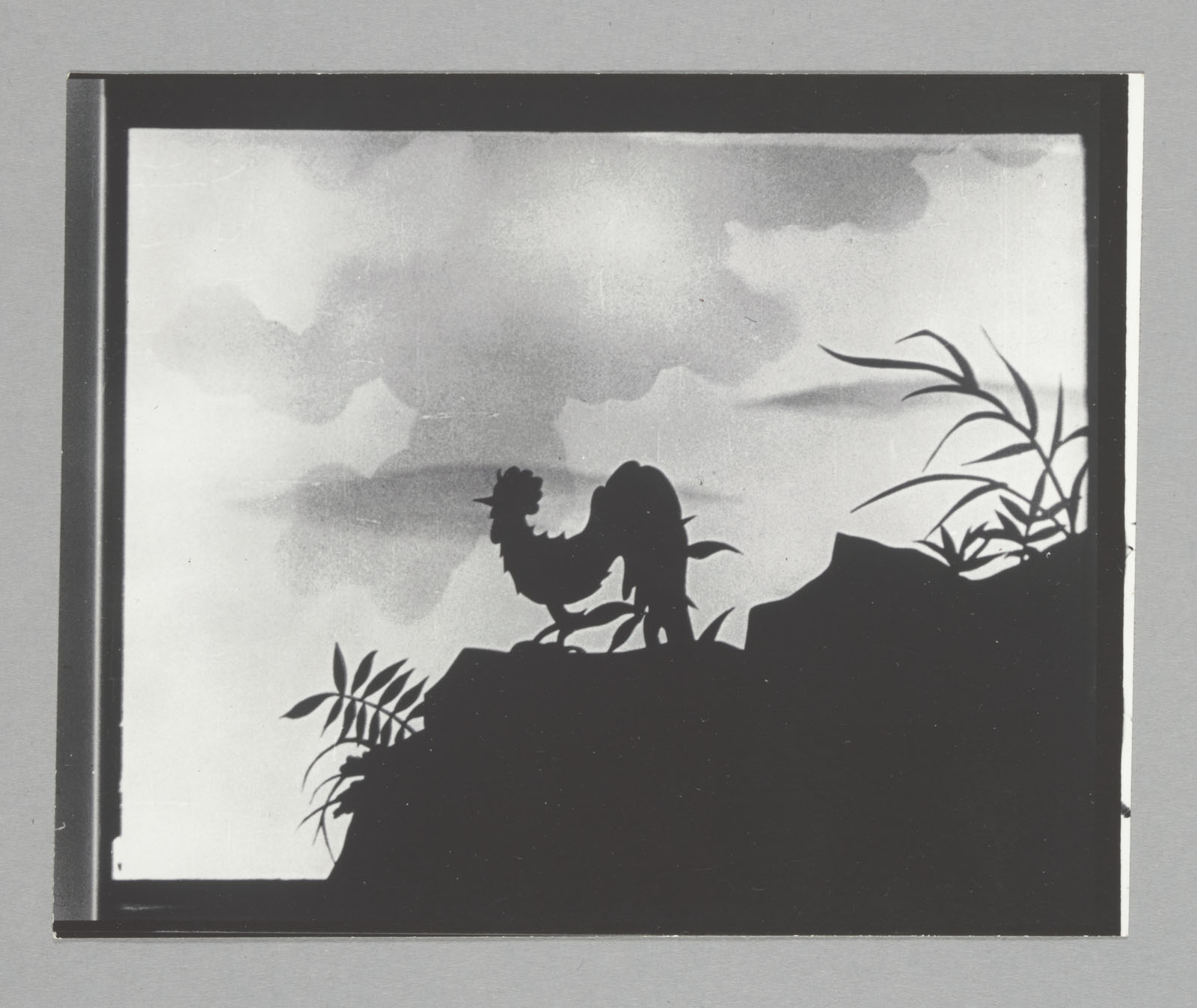Gallery
International Praise for Whale and The Phantom Ship
After WW2, Ofuji predicted the development of color film and took up the challenge of creating a new method of expression. It stemmed from the strong impression German silhouette animations such as The Caliph Stork and The Adventures of Prince Achmed left on him in his youth. Ofuji strived to find ways to add color to the style and after much research decided upon colored cellophane.
Whale (くじら, 1952) and The Phantom Ship (幽霊船, 1956) are the results of these efforts, and the fantasy world he created in these works was accepted by the world at foreign film festivals, such as Cannes and Venice, ahead of Japan. When he began to receive many letters from festival organizers offering to screen his works, he tried to respond without the help of the film industry. Subsequently, he attracted the attention of newspapers and magazines in Japan. Still, Ofuji continued to be a self-reliant artist.
“At a time when every creator in Japan was using the celluloid technique, I stopped and asked myself if it is acceptable for silhouette films alone to make no progress in technique for thirty years. It was this dissatisfaction that led me to start revolutionizing the way we make film [...]
I first tried to use painted glass. However, since it is not possible to cut or paste glass, I then looked to colored celluloid sheets, but it was too costly. It would have cost two or three million yen just for the celluloid to make one short film. Around that time, I saw items purchased at a department store wrapped in colored cellophane, and I thought, ‘this is it’. Cellophane is cheap and I can cut and paste it as I like. It was this technique that I used to create the colored cellophane film, Whale.”
Noburo Ofuji, Thirty Years of Silhouette Film (影繪映画三十年)
Geijutsu Shincho (芸術新潮), July 1956 issue
Achievements in Religious Animation
In the postwar period, Ofuji created many works that had a religious motif, including Christianity, Buddhism, and Shinto, sponsored by various religious groups. A series of Tales of the Kojiki (古事記物語), planned by the Association of Shinto Shrines, and The Great Sage Shakyamuni Buddha (大聖釋迦), which was re-edited into the feature The Life of Buddha (釈迦の生涯) after his death, are considered the culmination of Ofuji's monochrome silhouette films.
Please tell us what you think about this website by filling out a short questionnaire.
To educational users: Please provide us with feedback on website usage for educational purposes.
- Unauthorized copying and replication of the contents on this site are prohibited.
